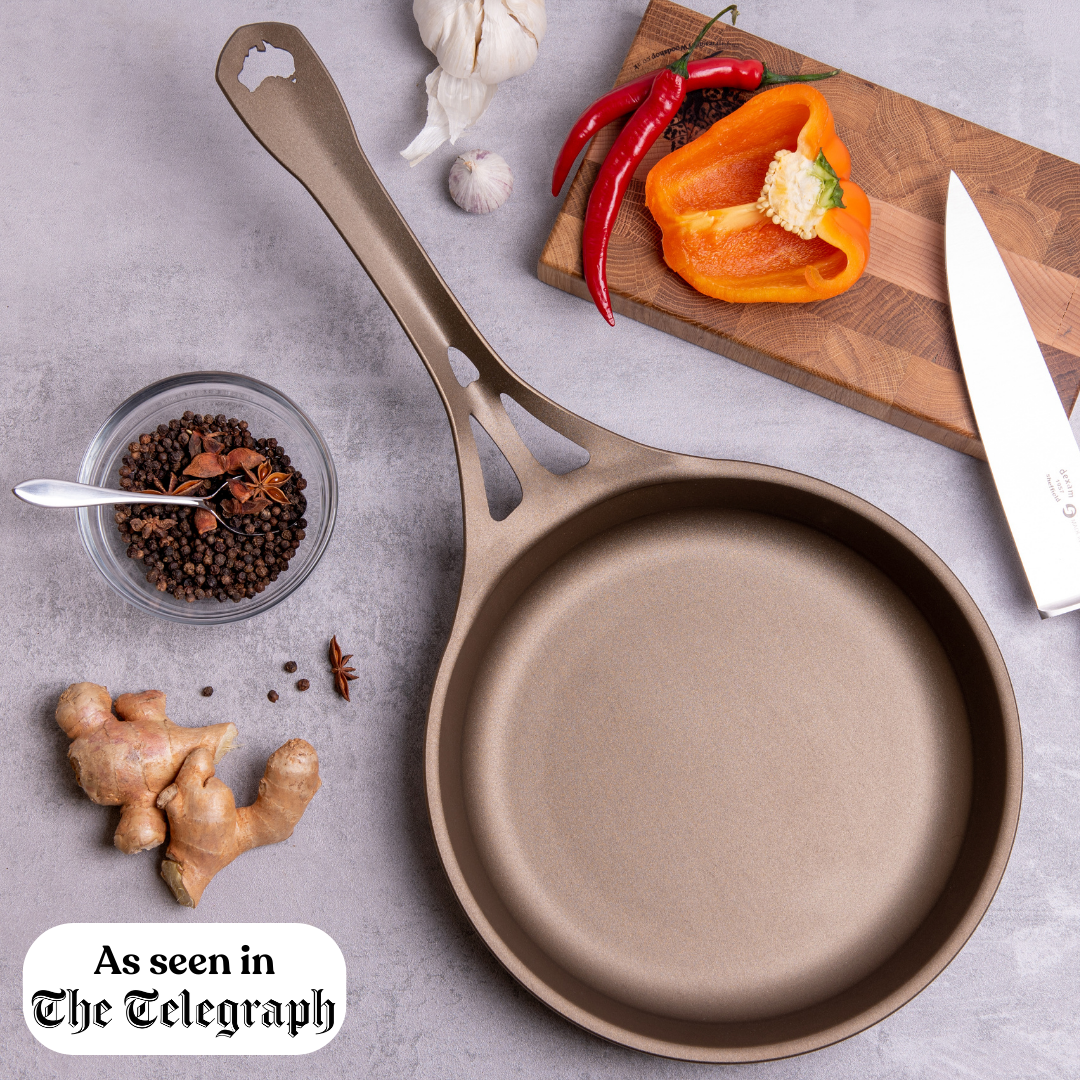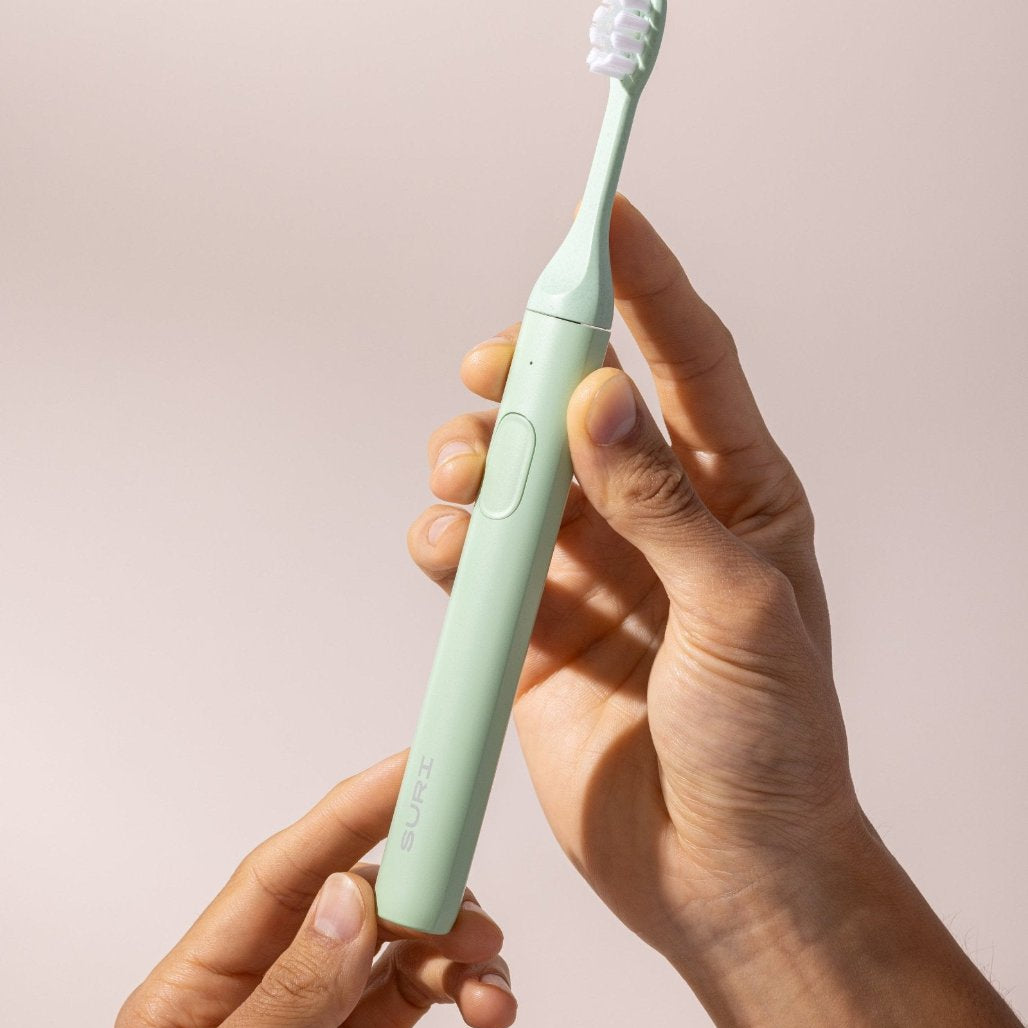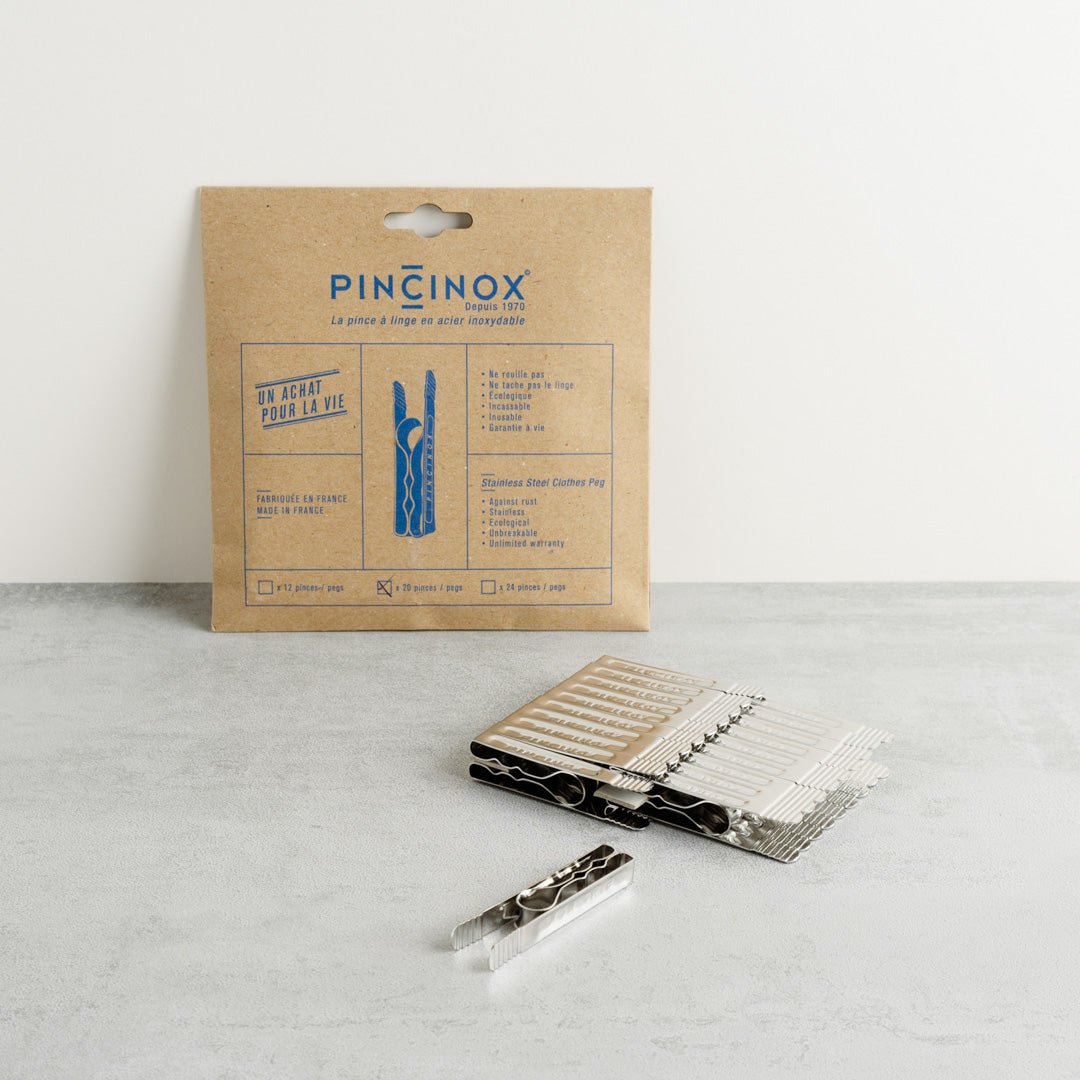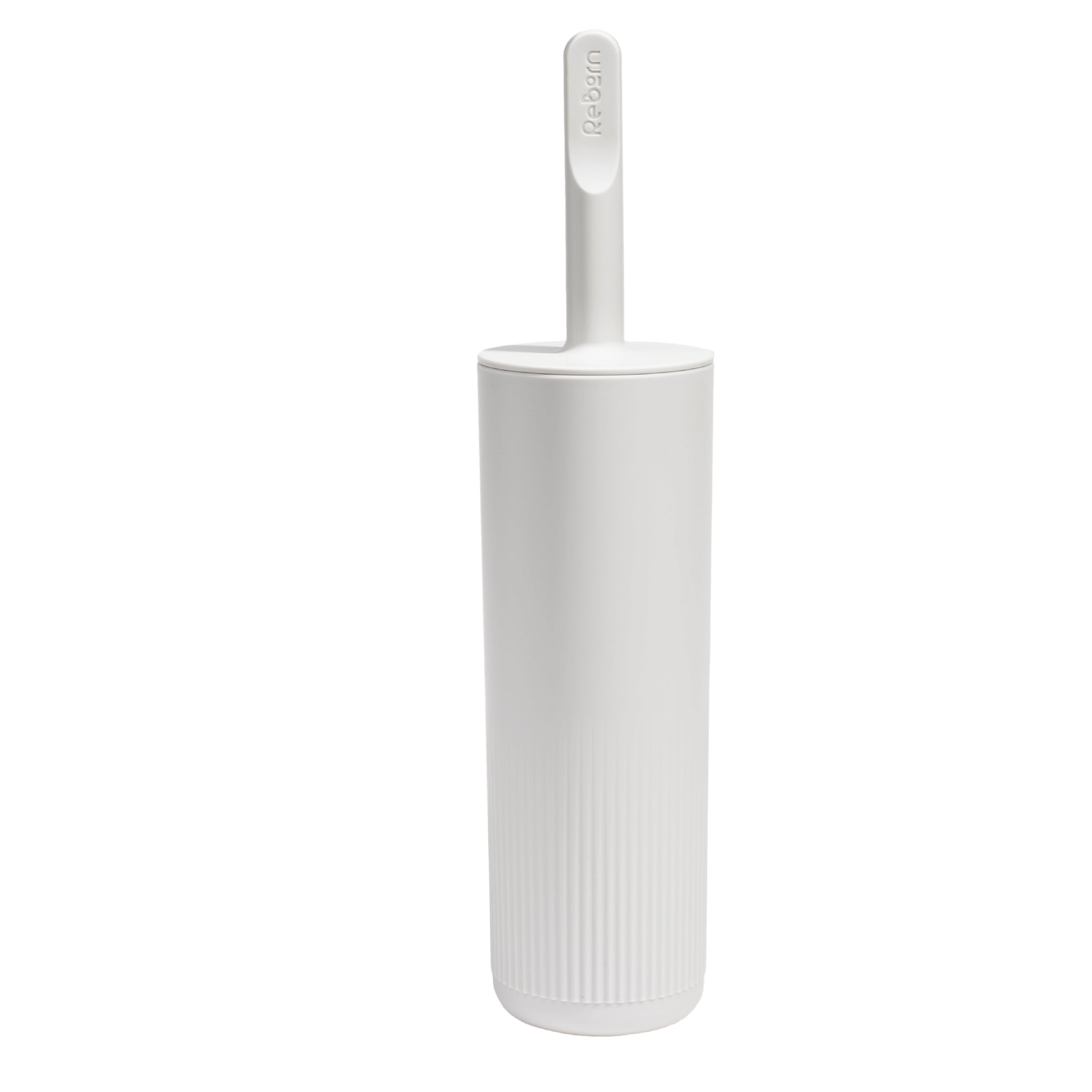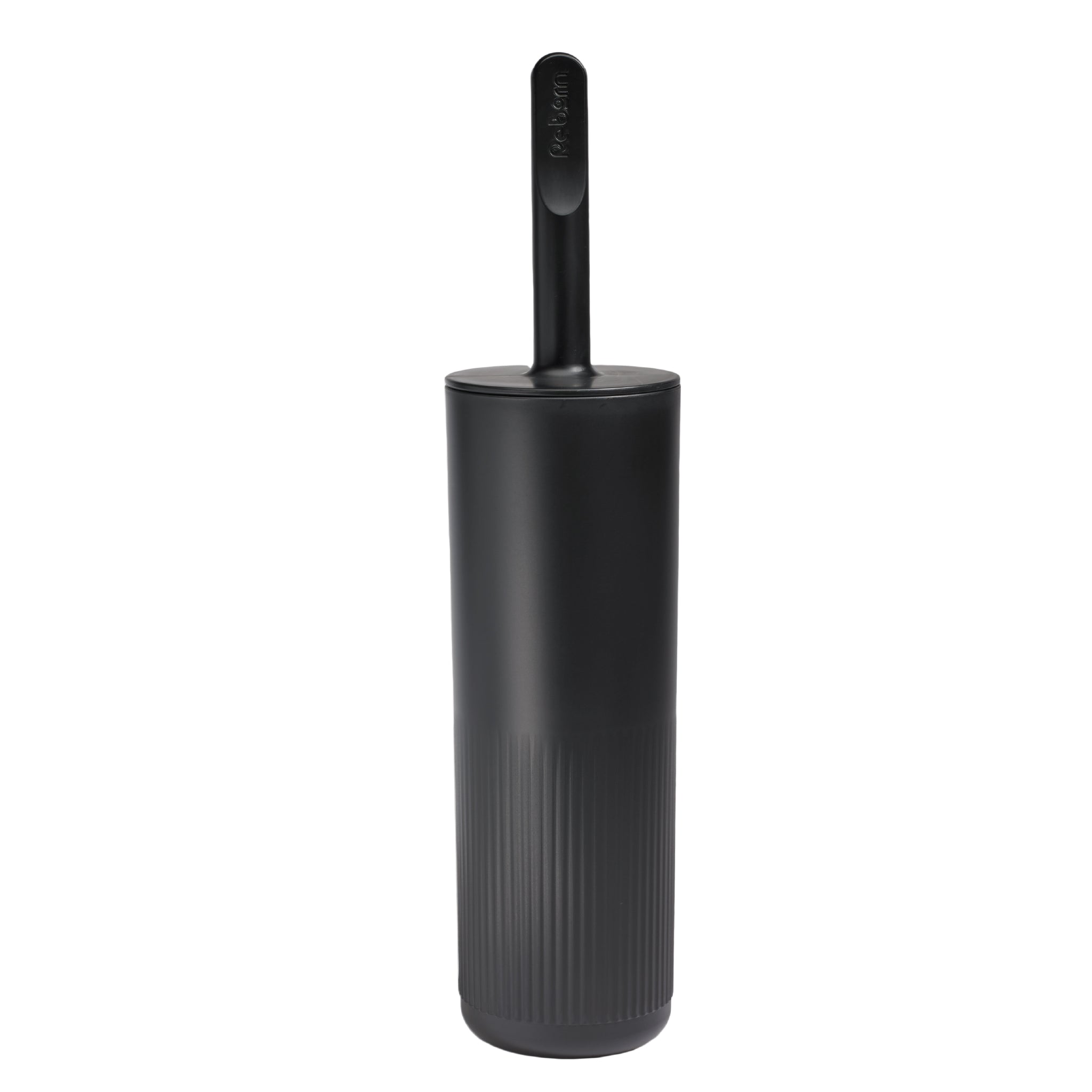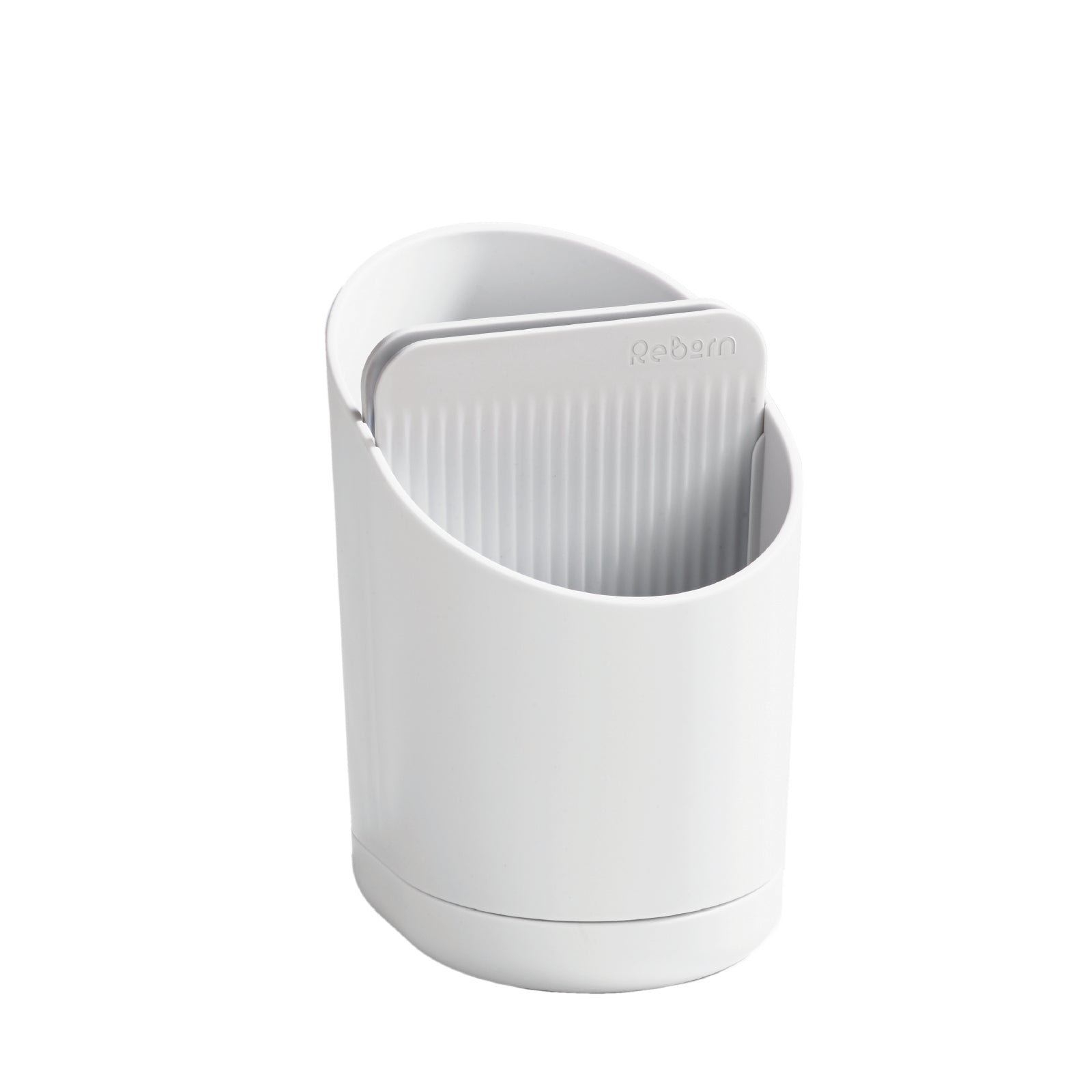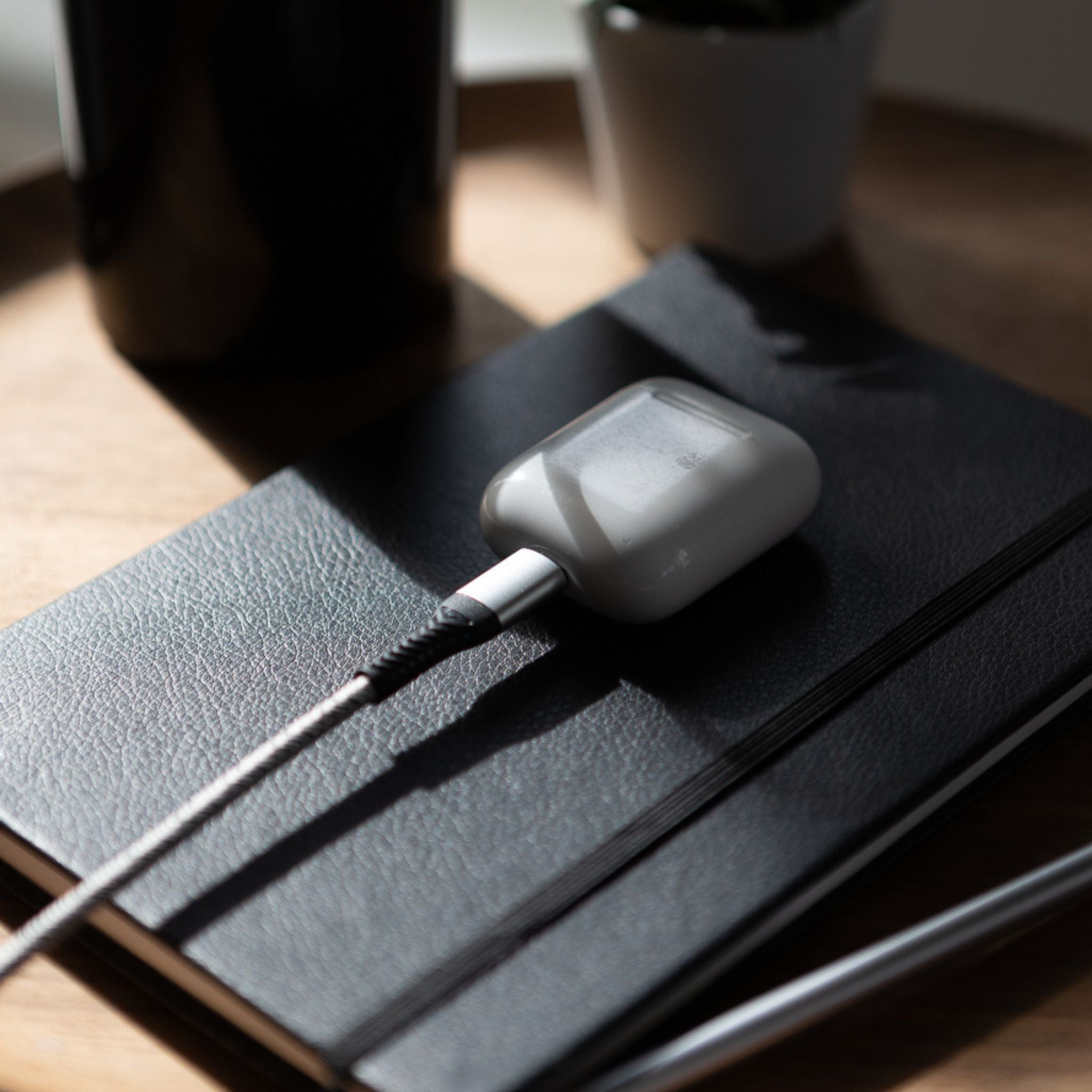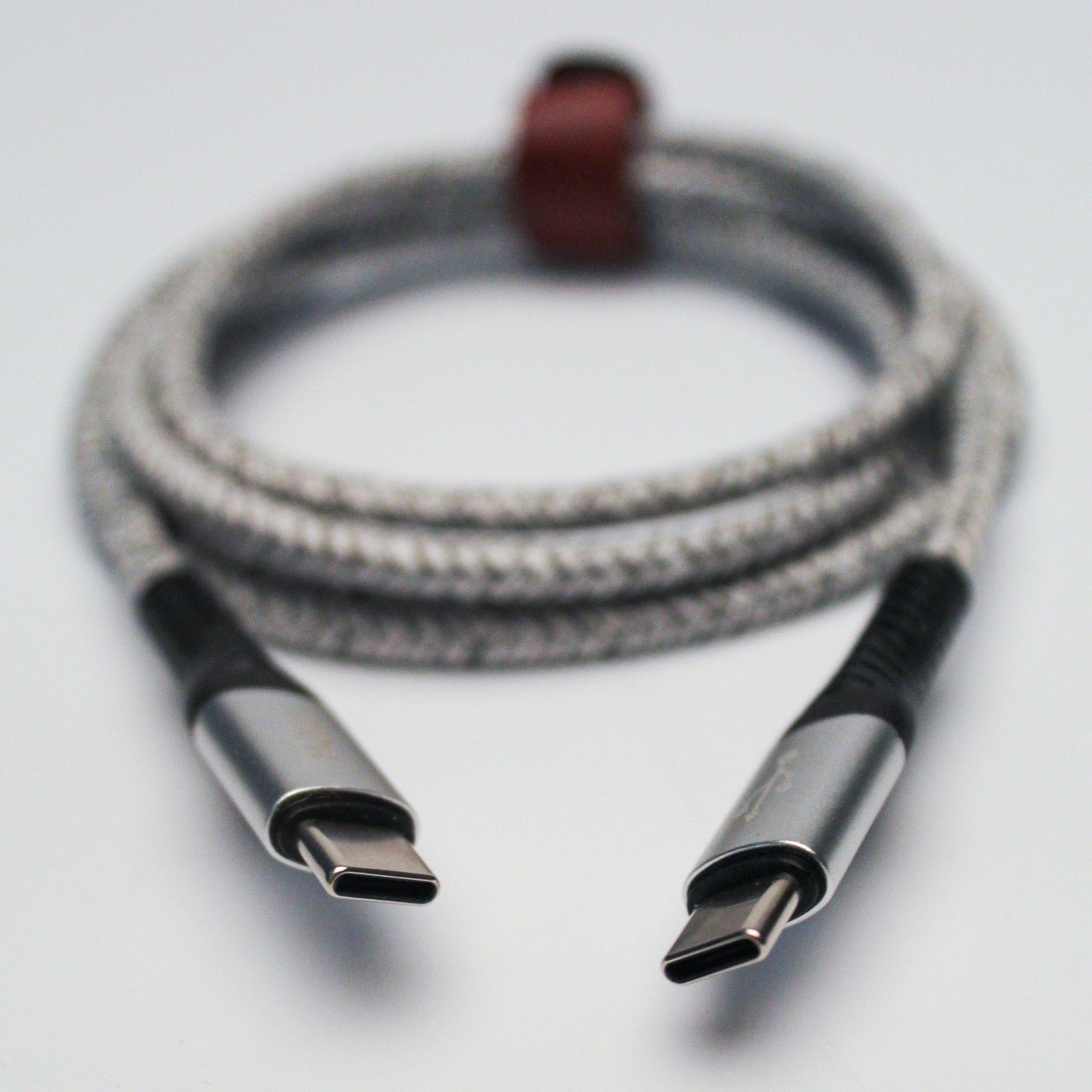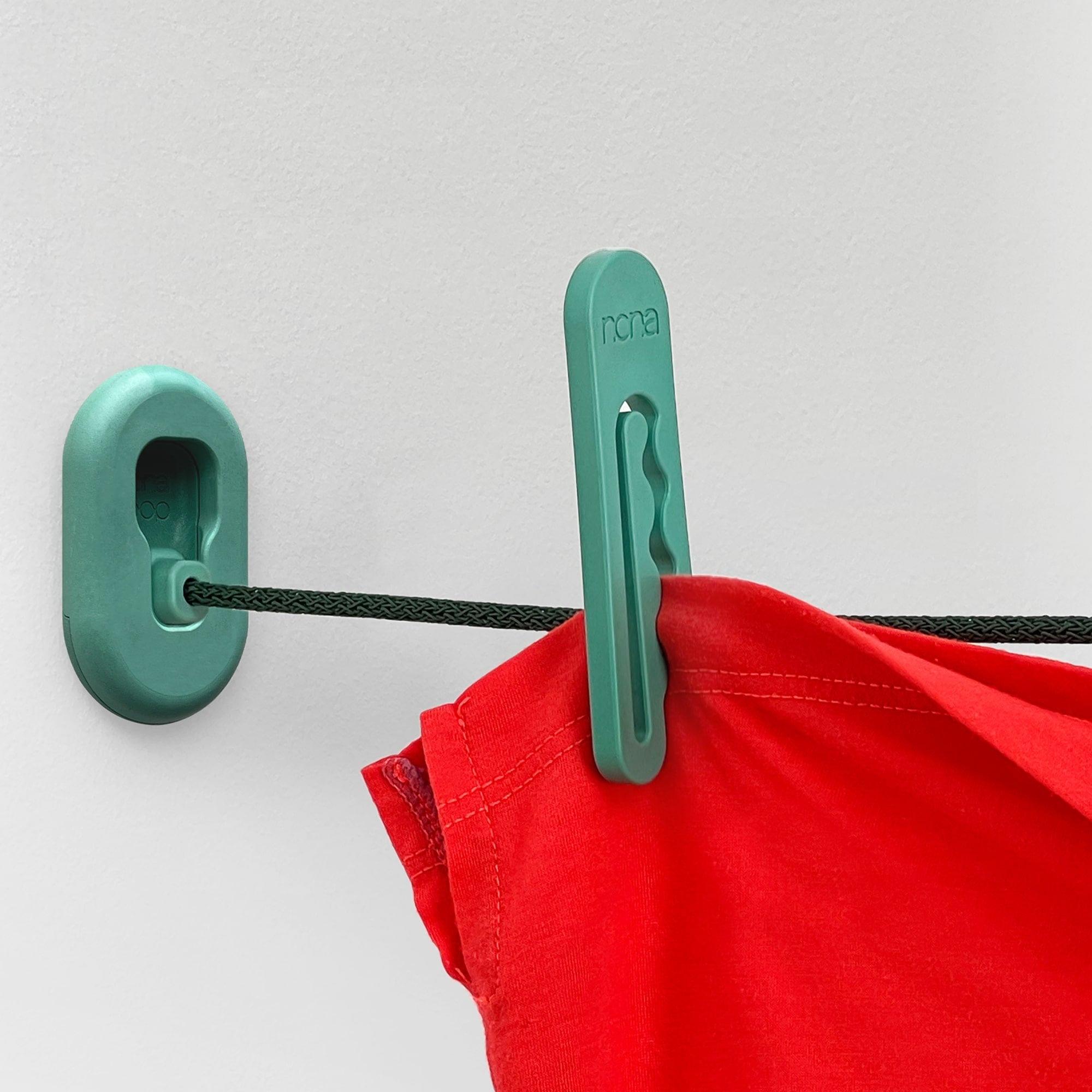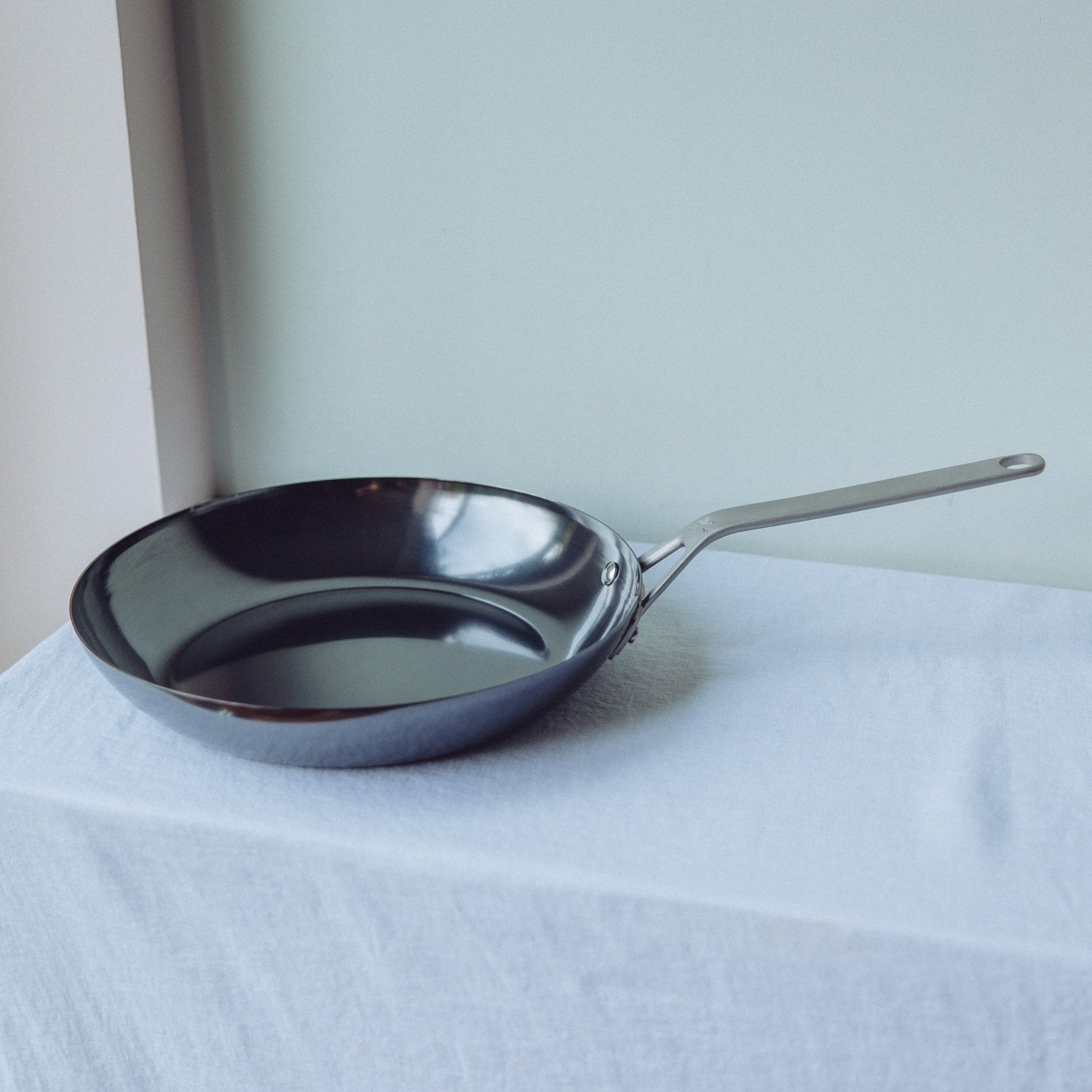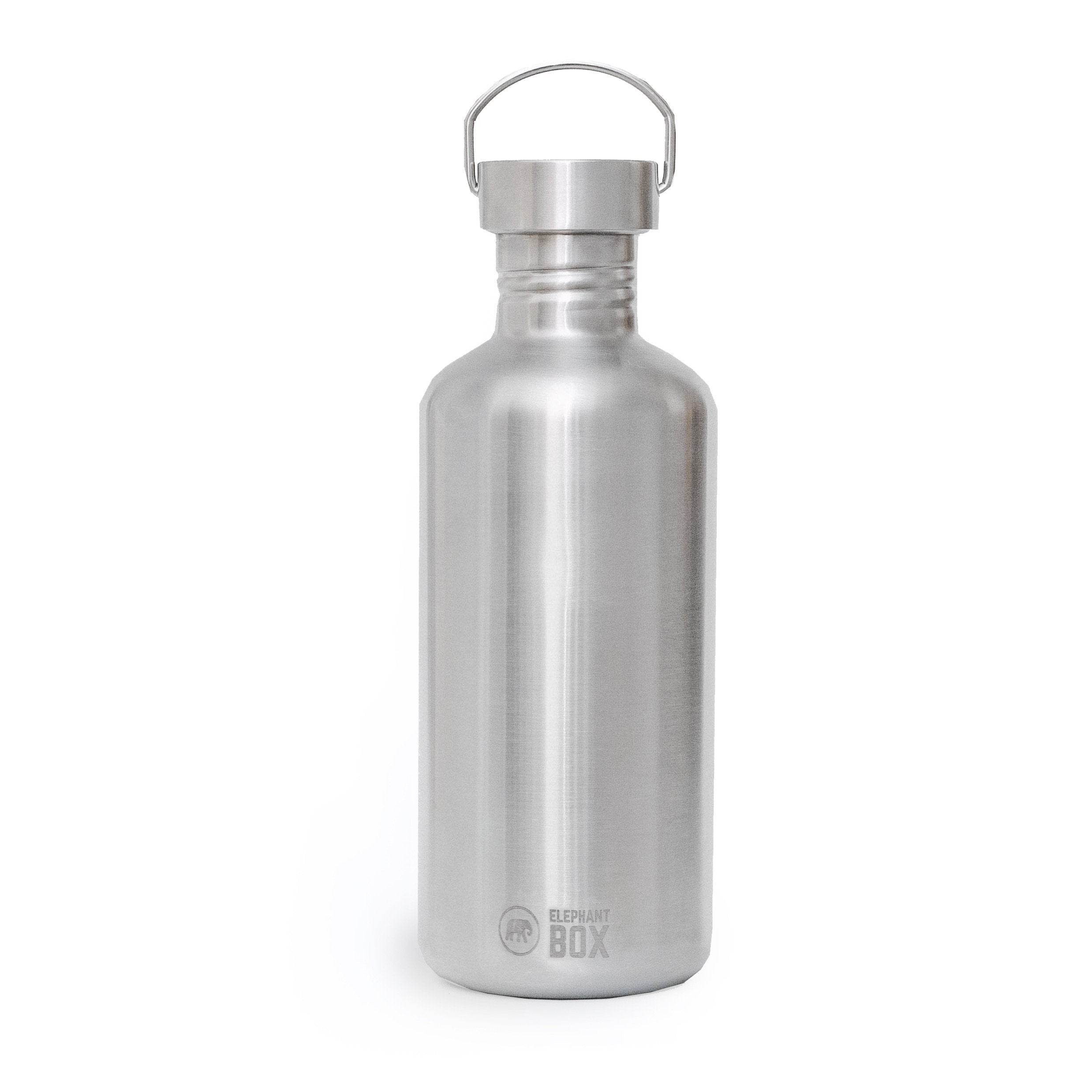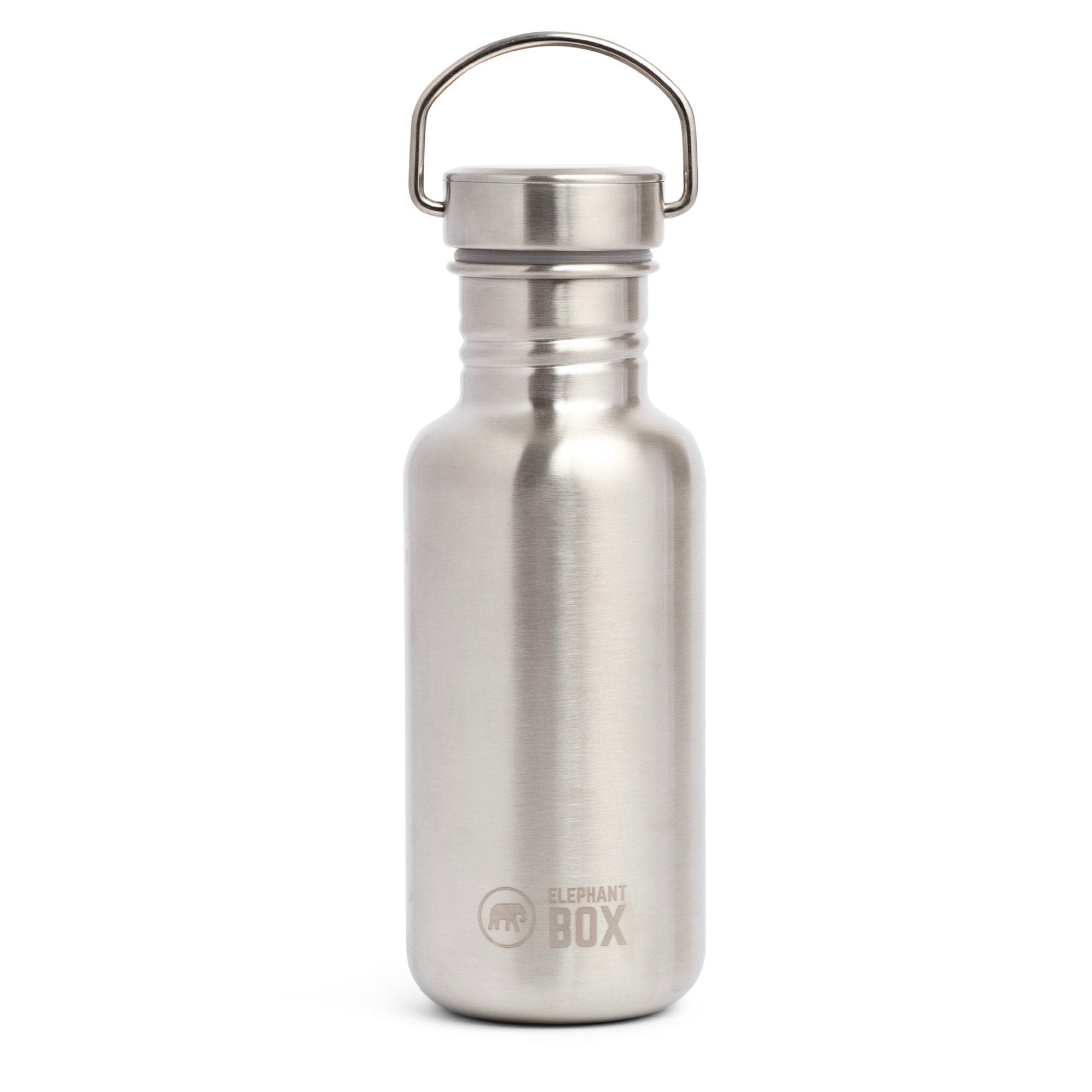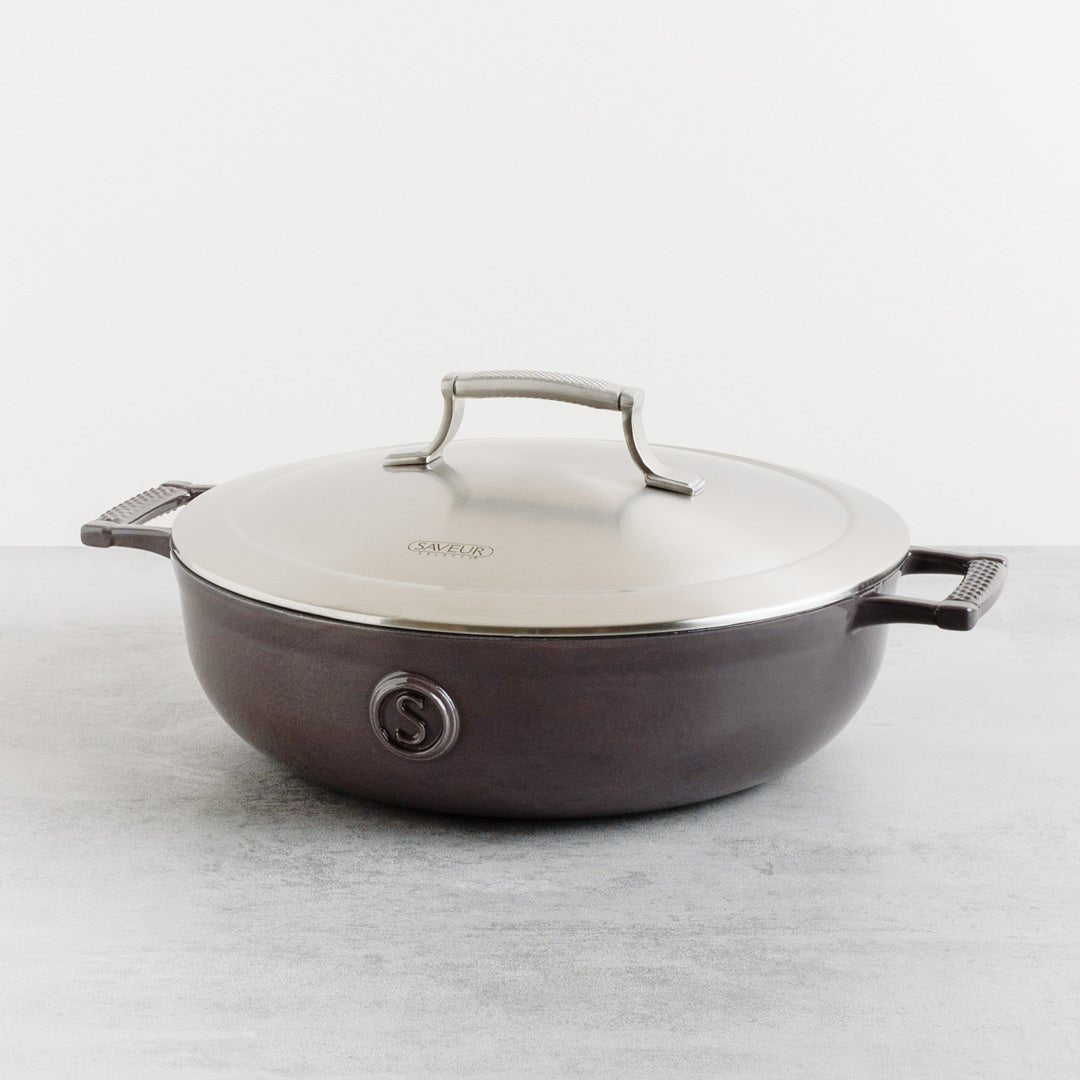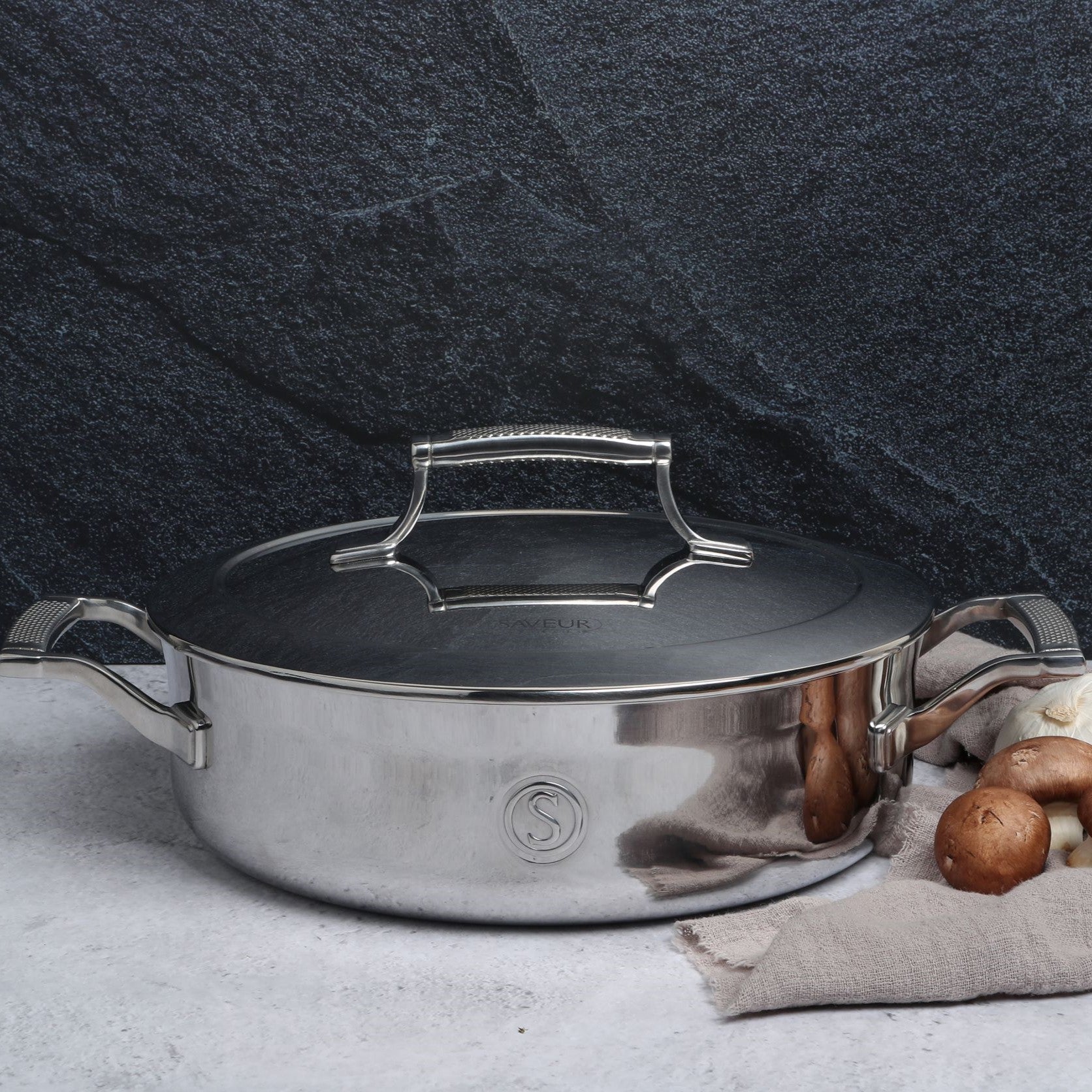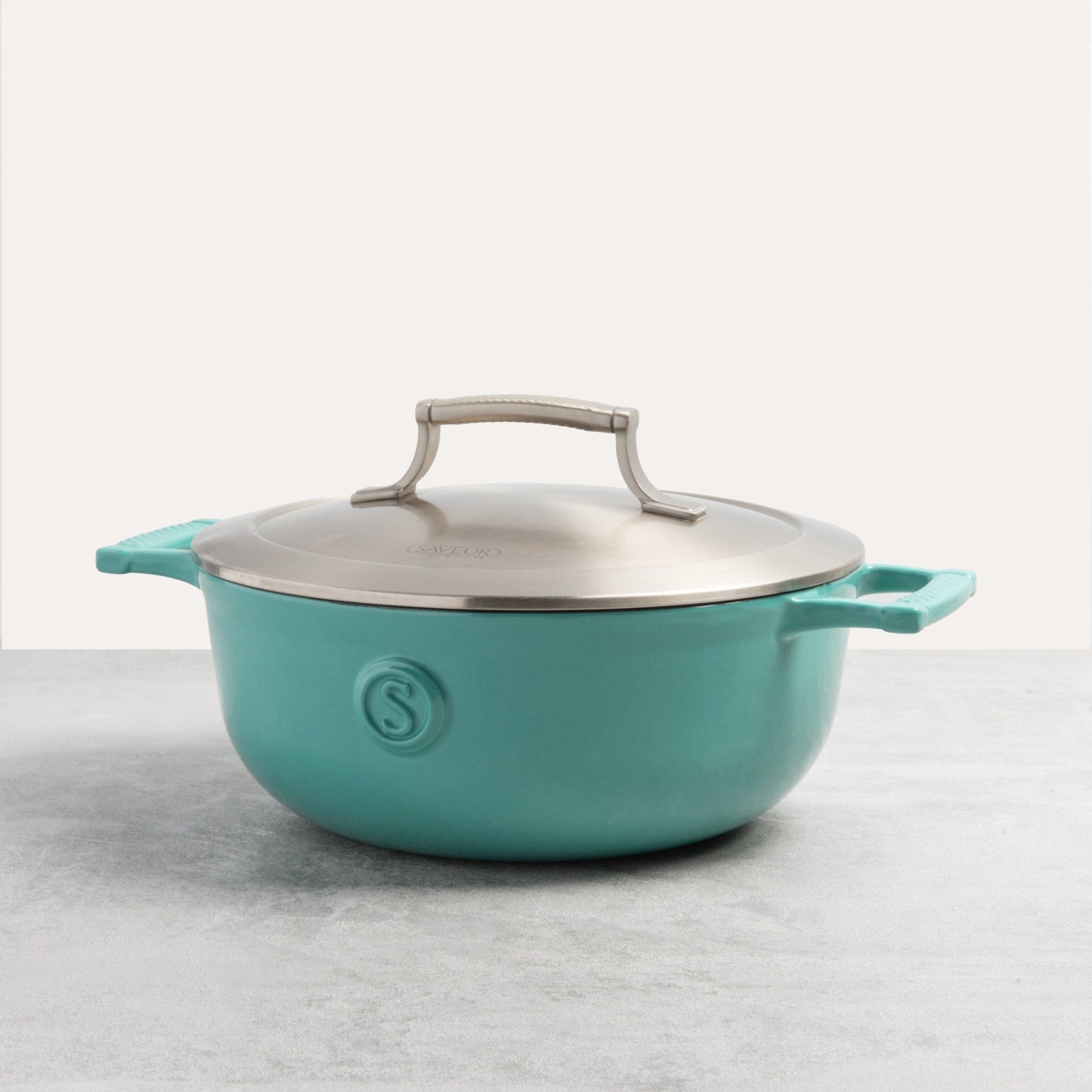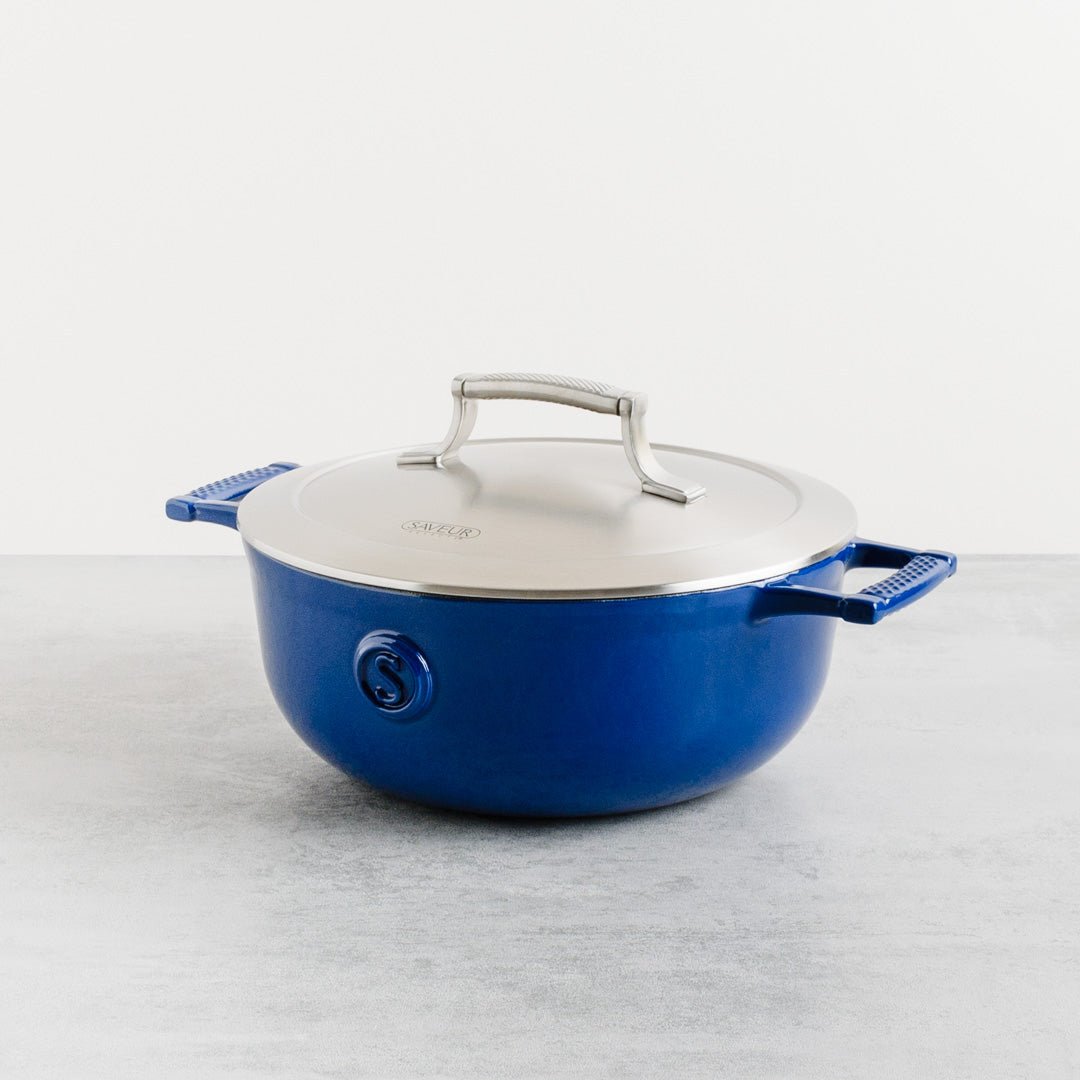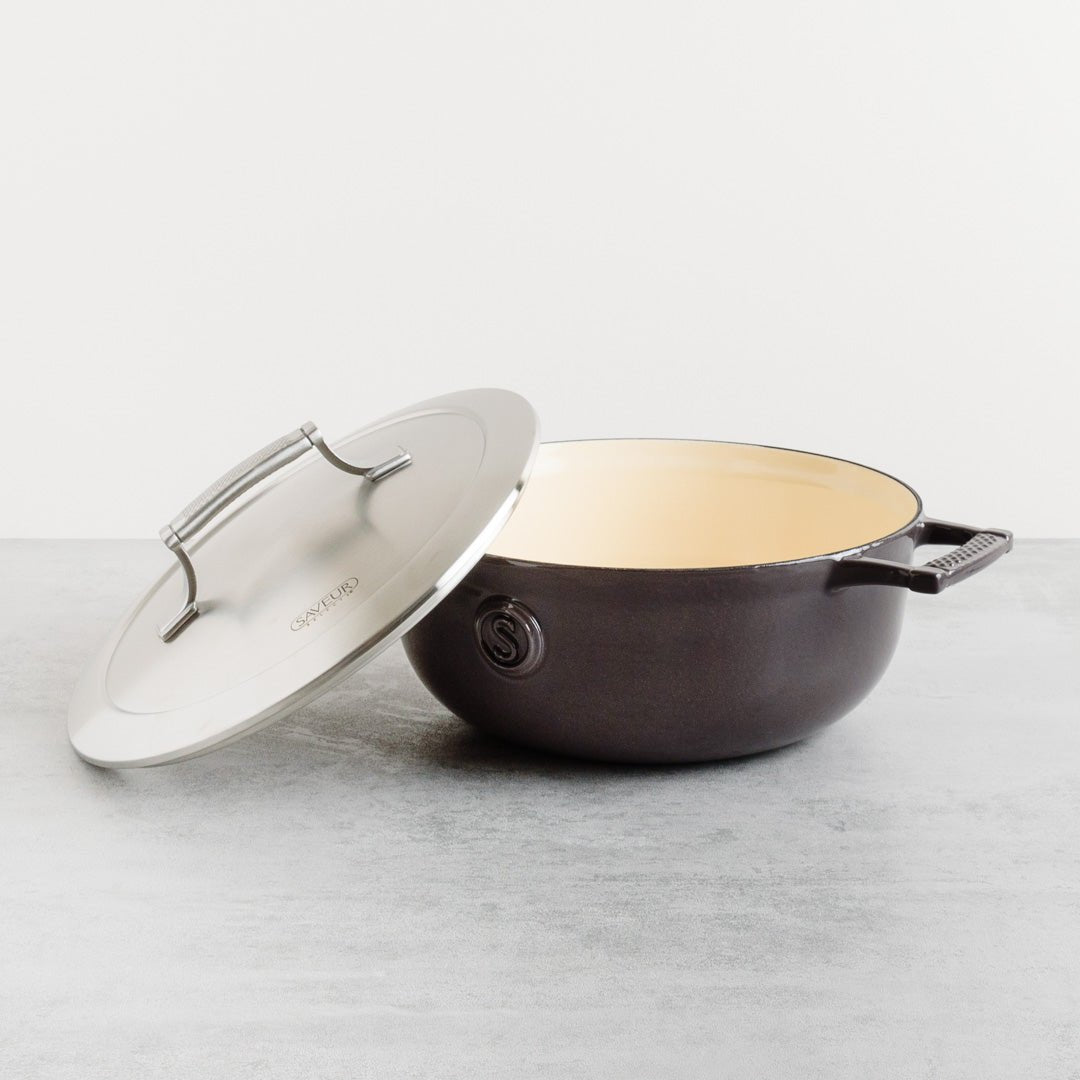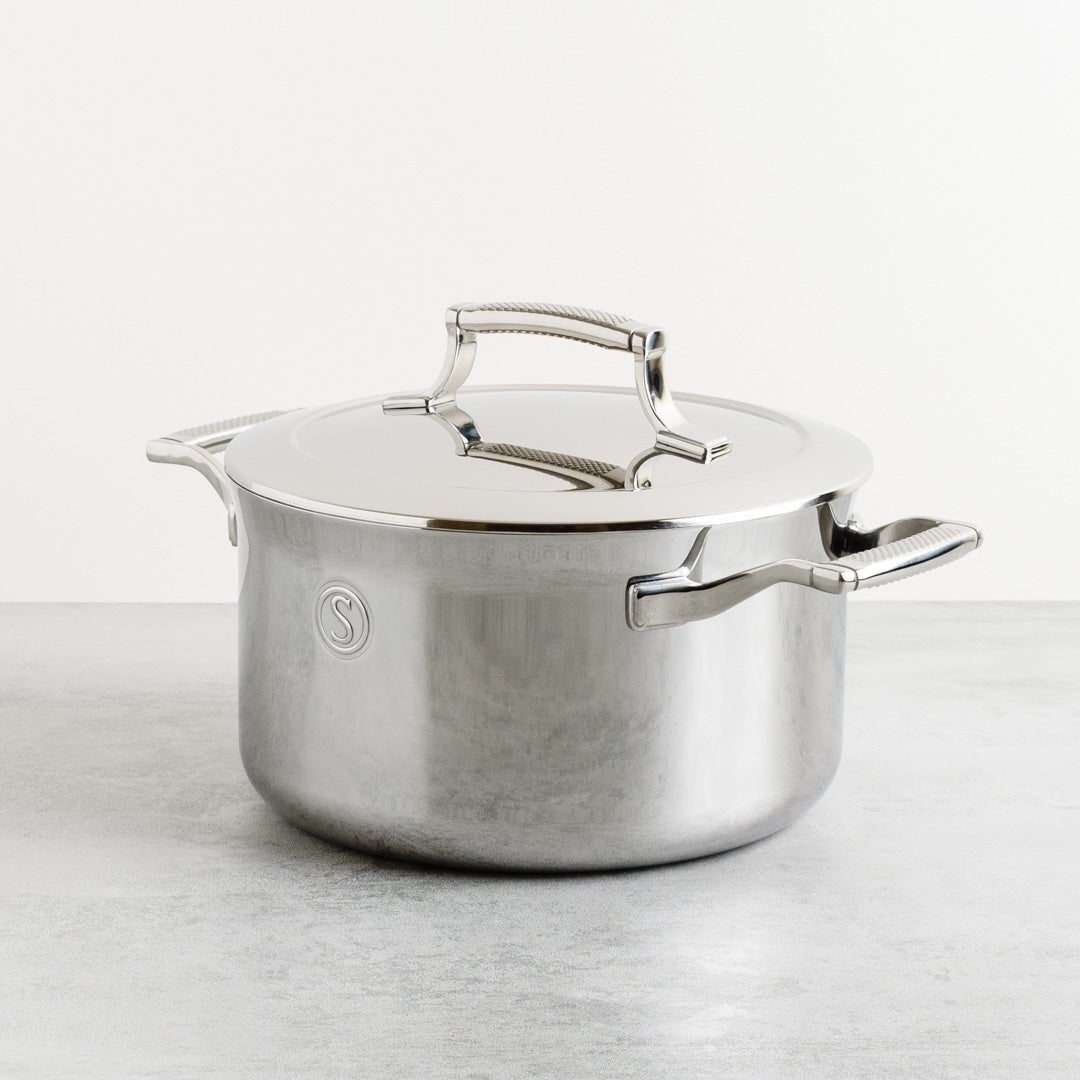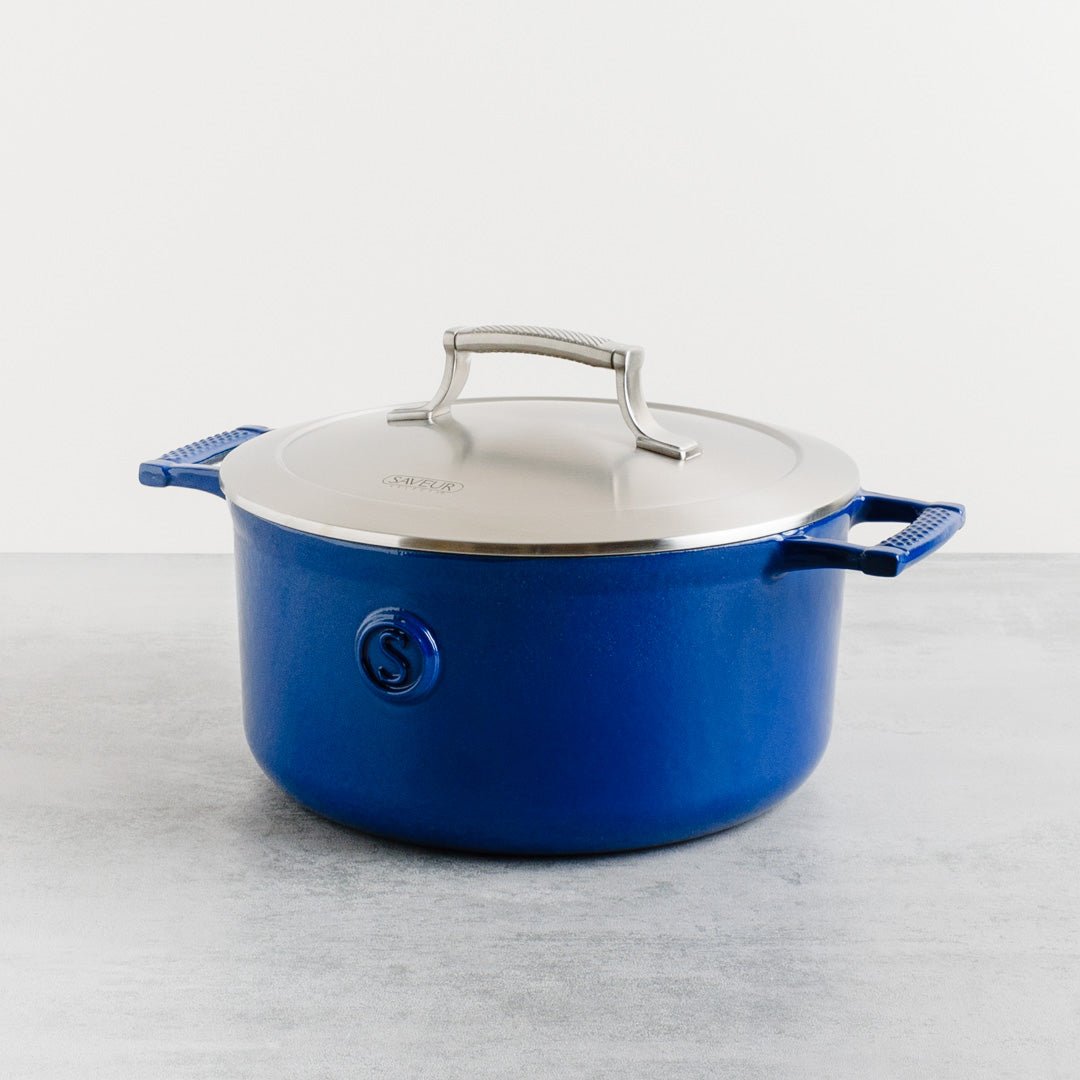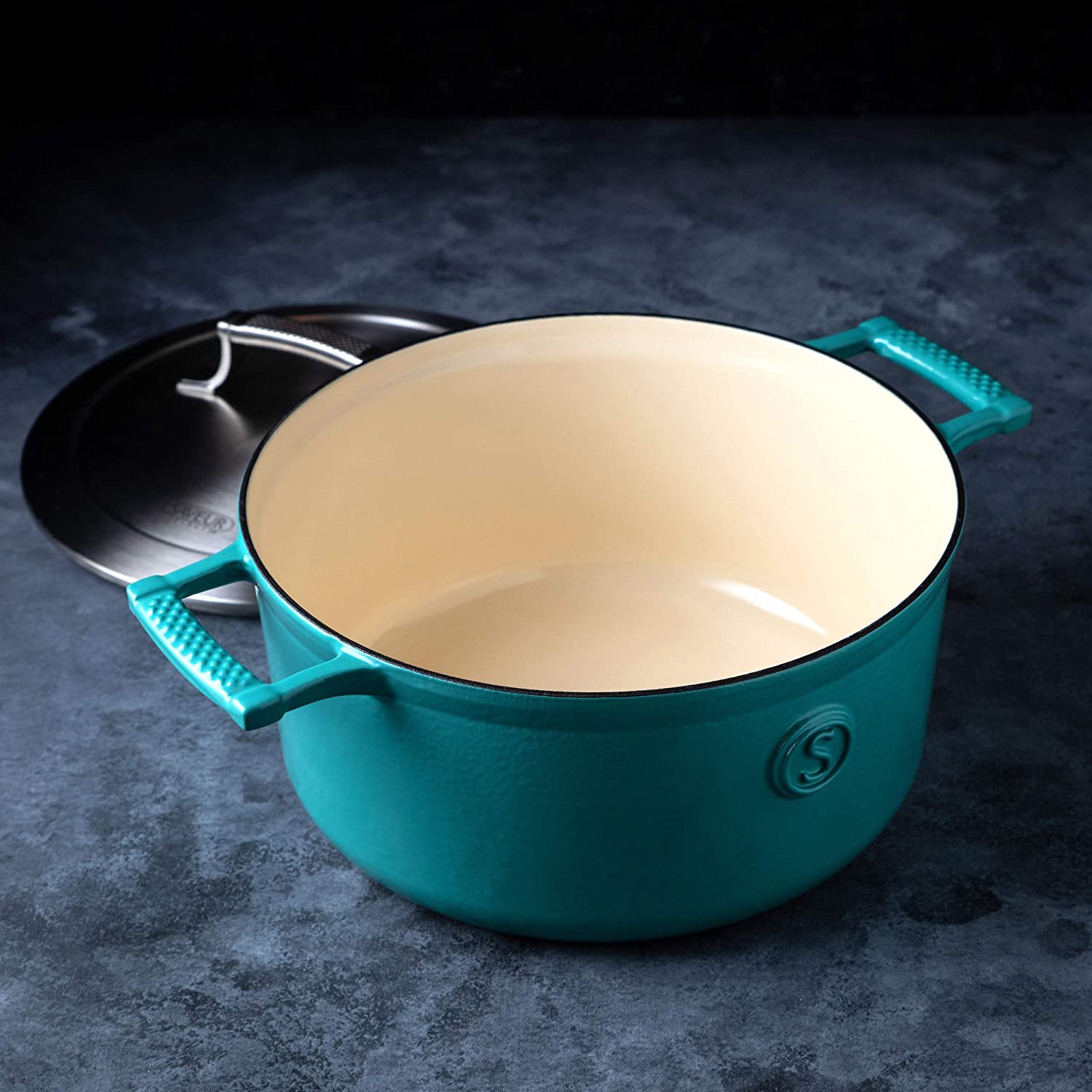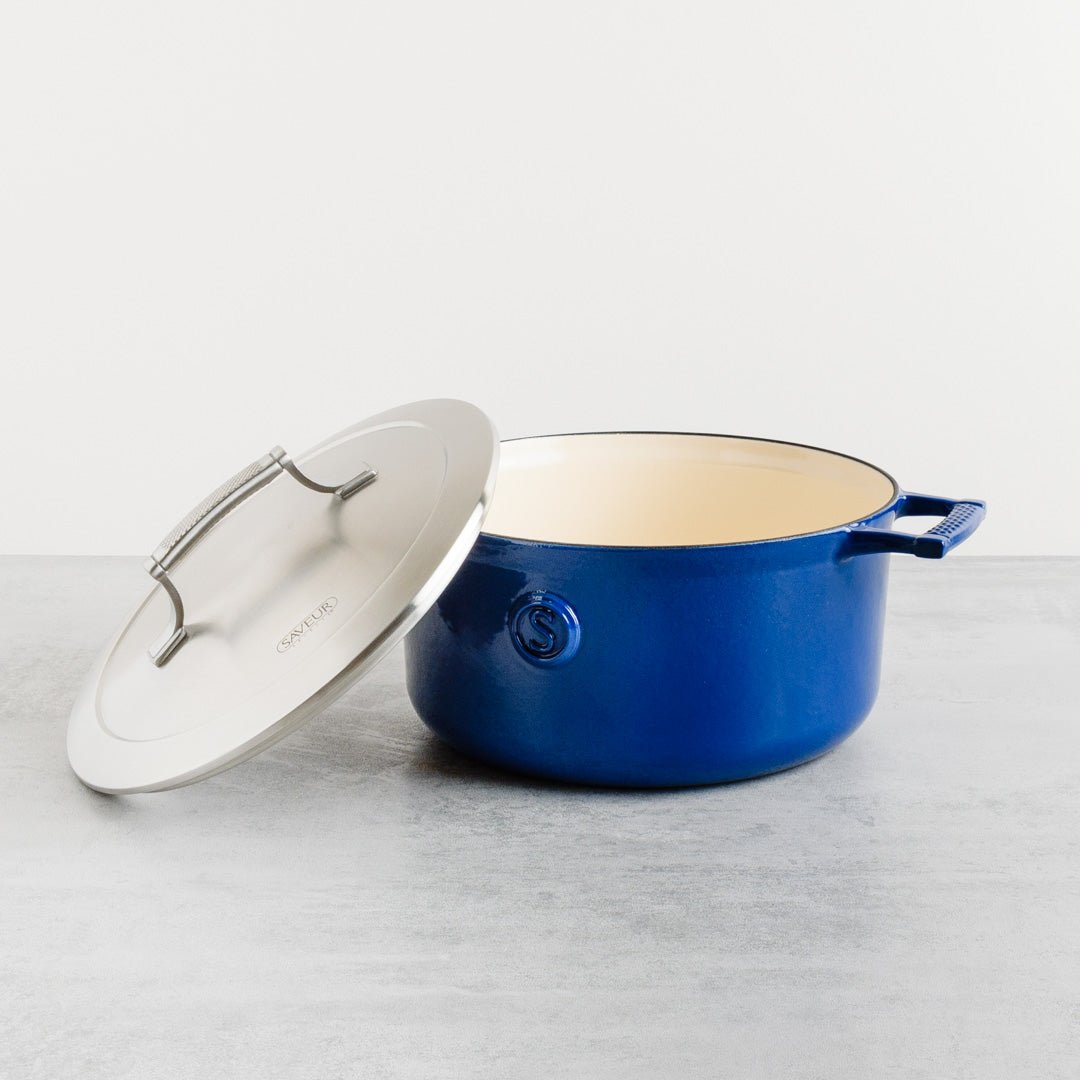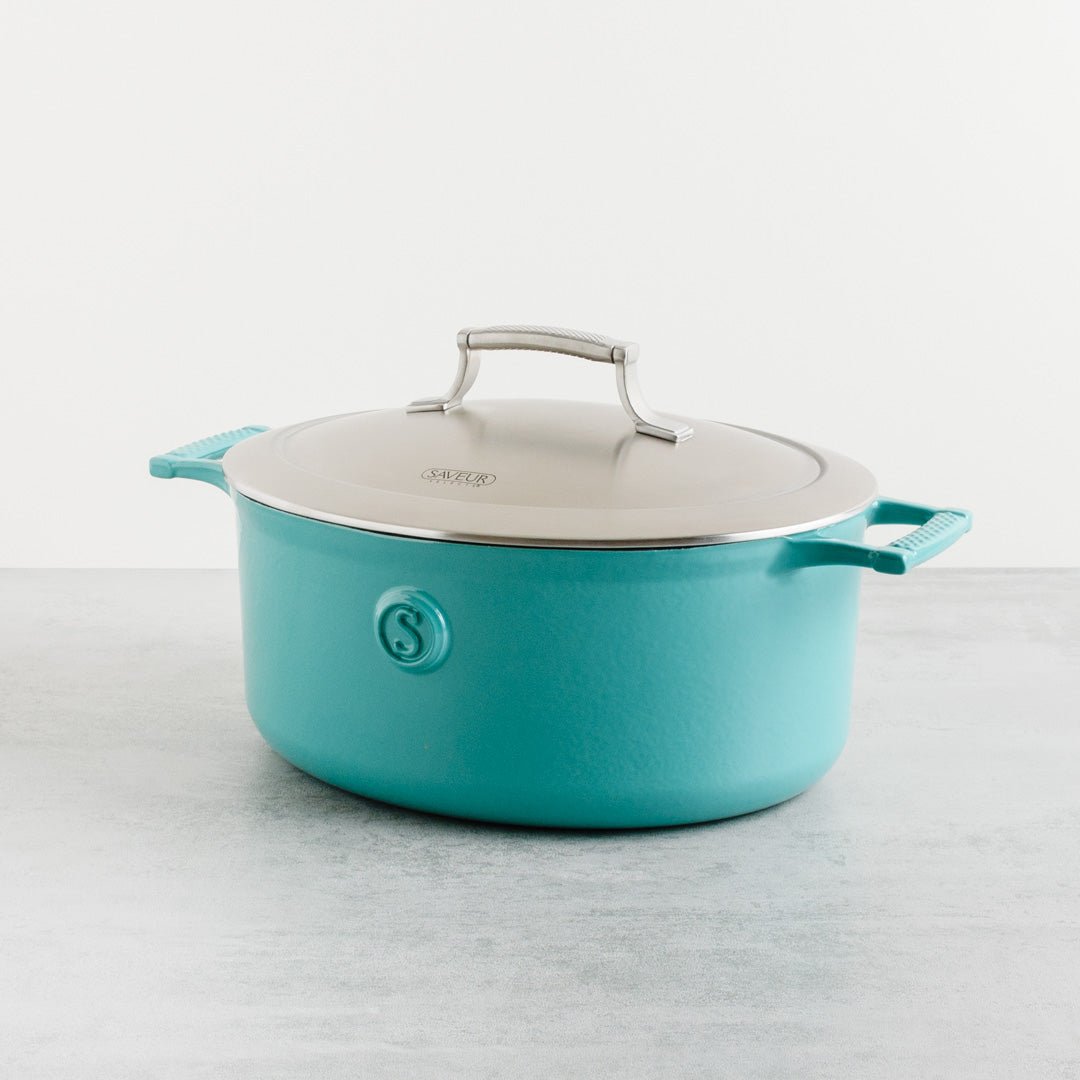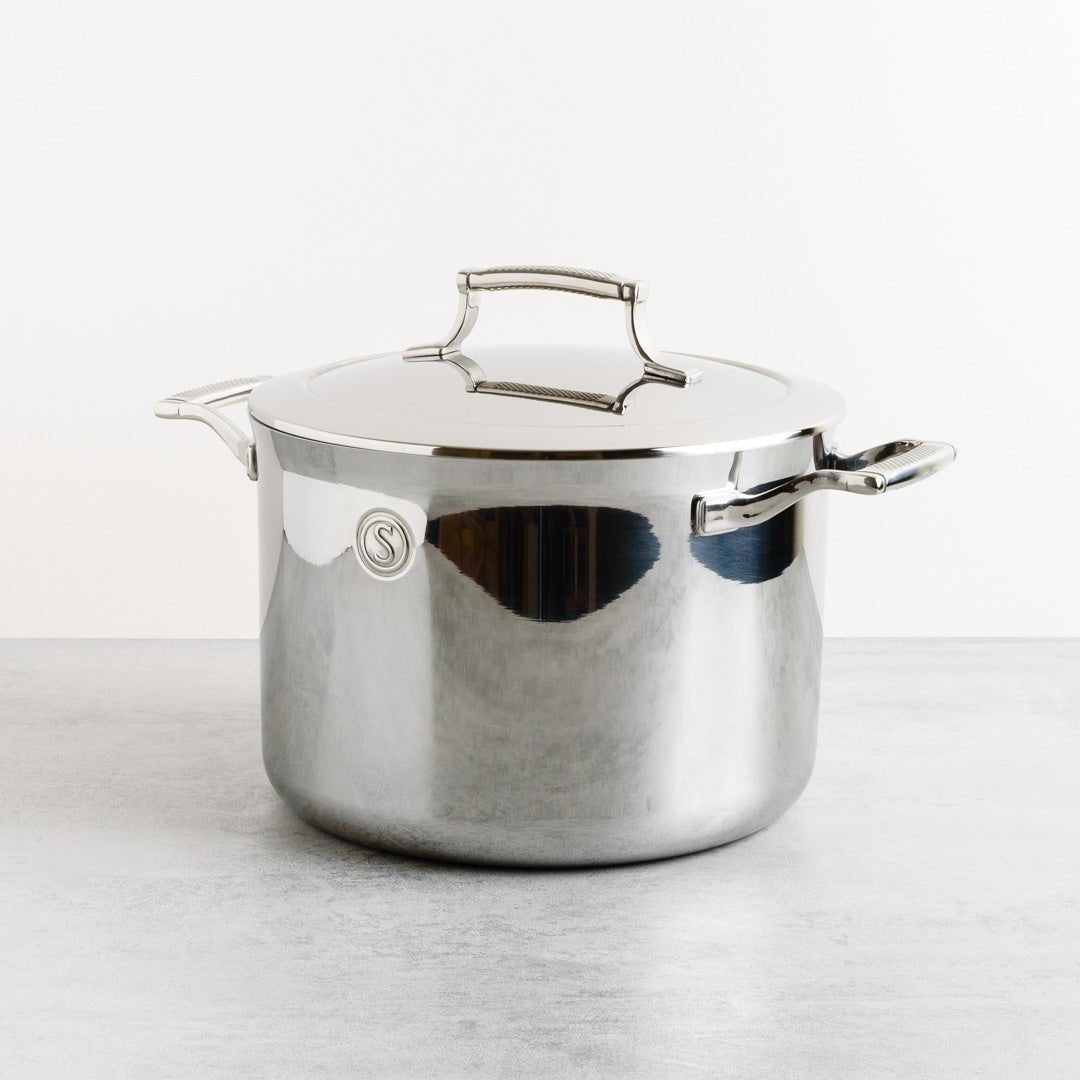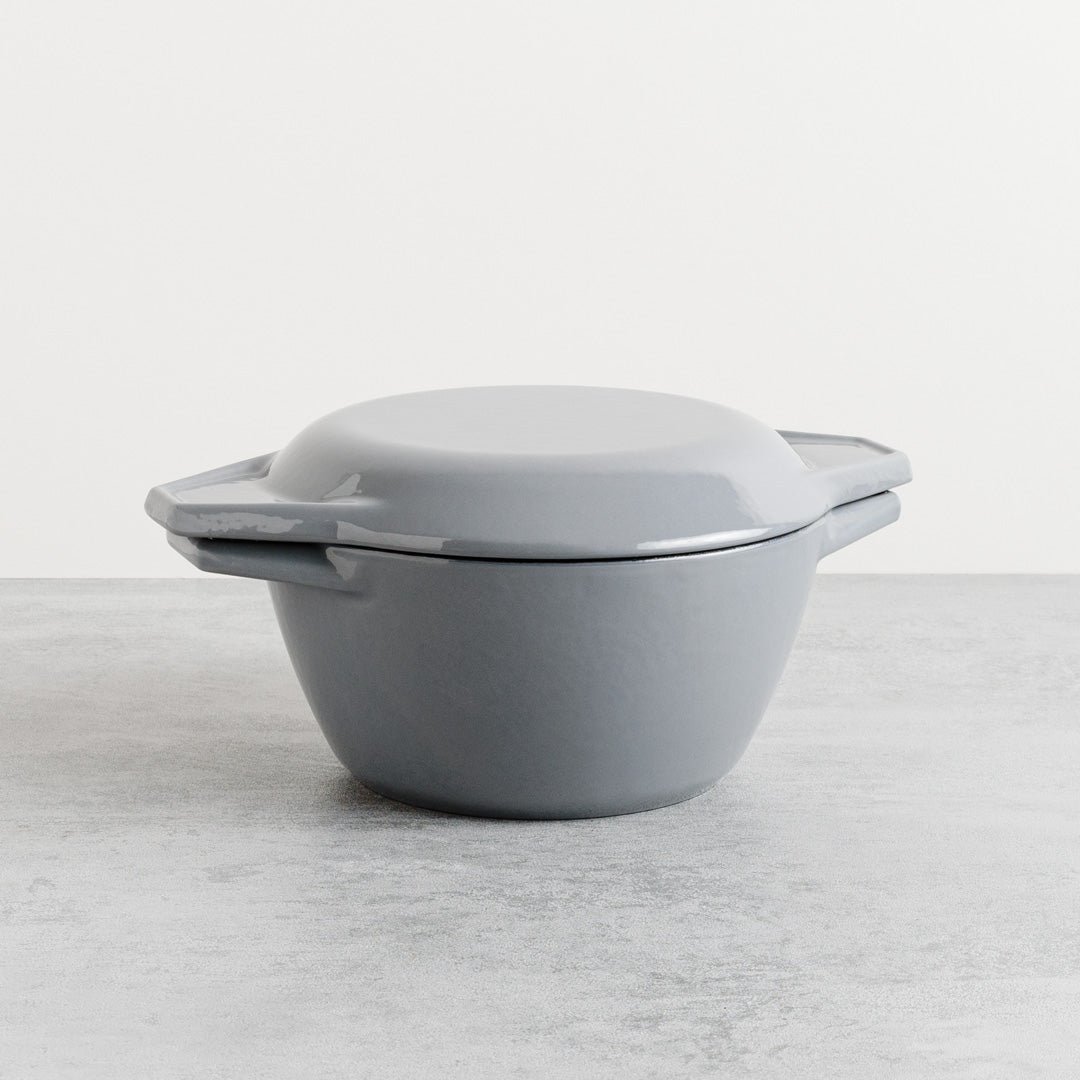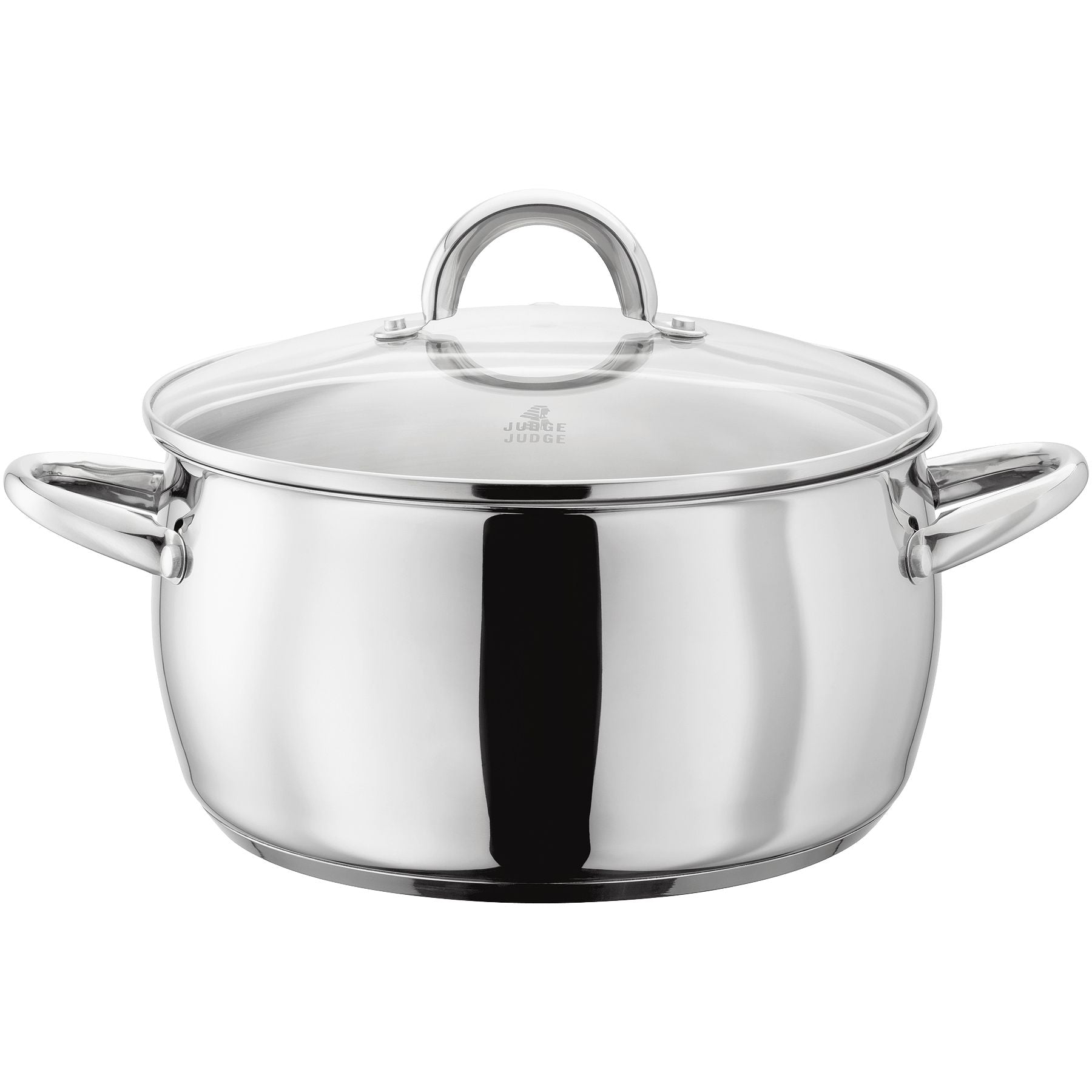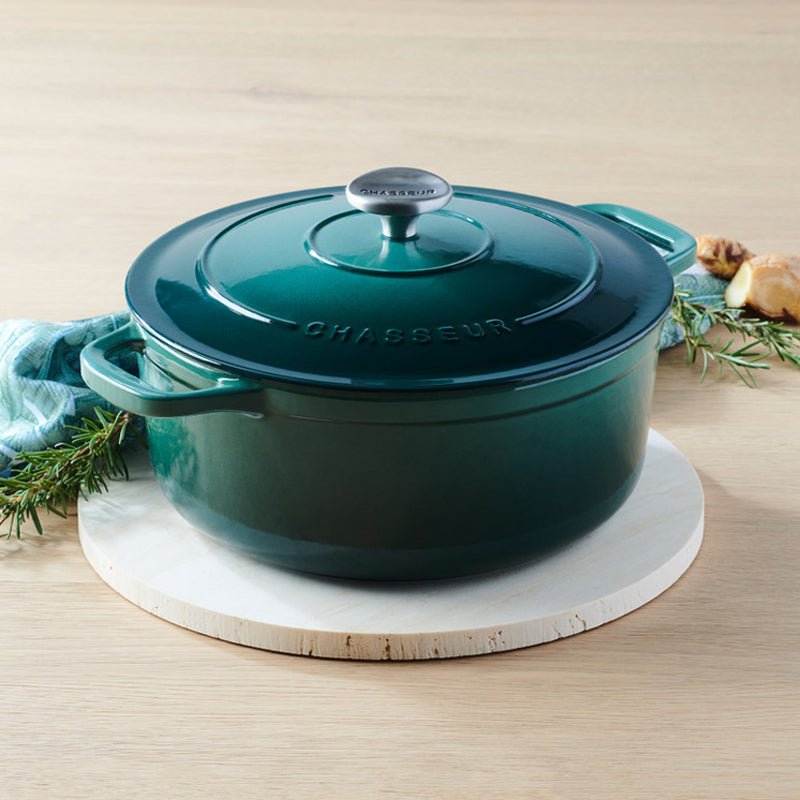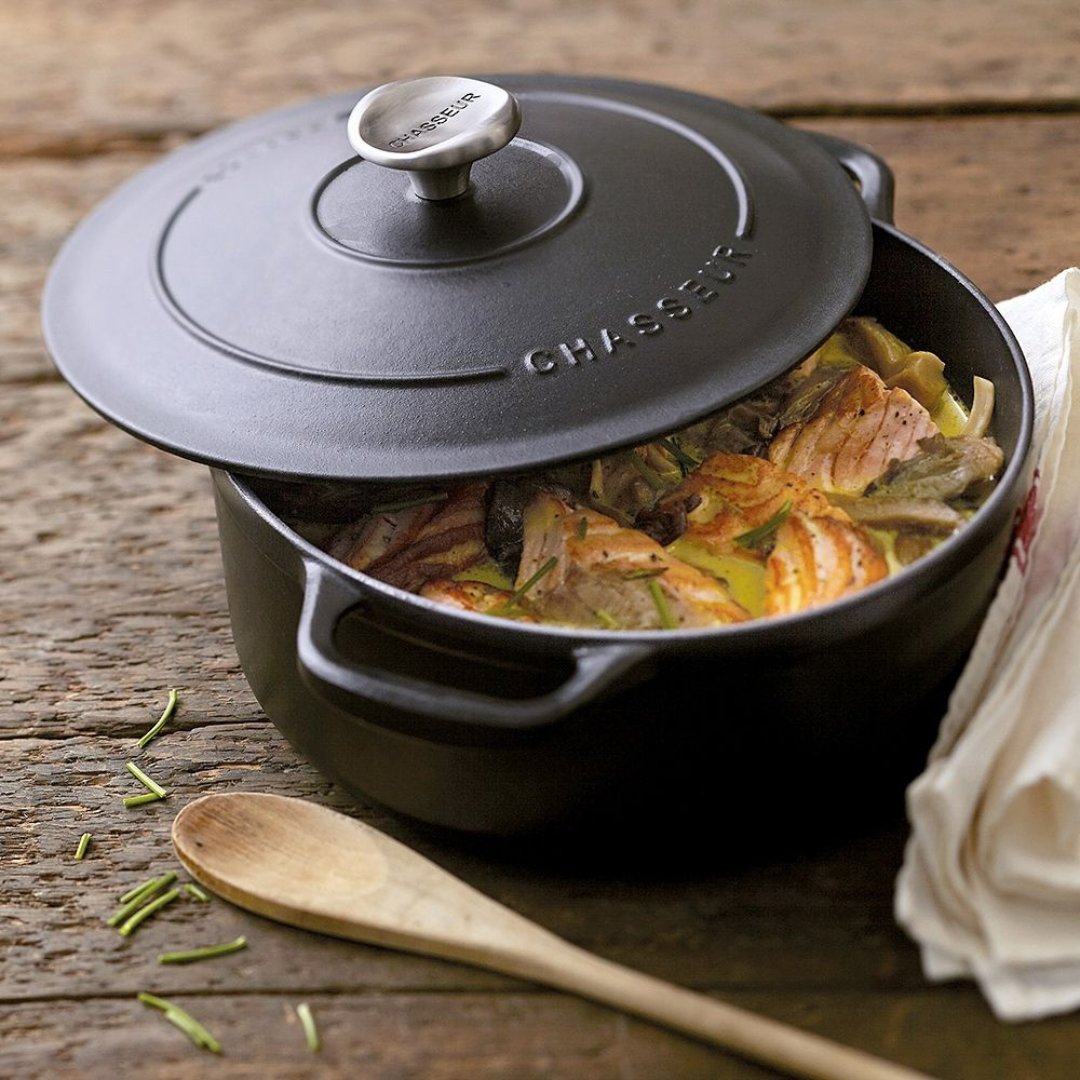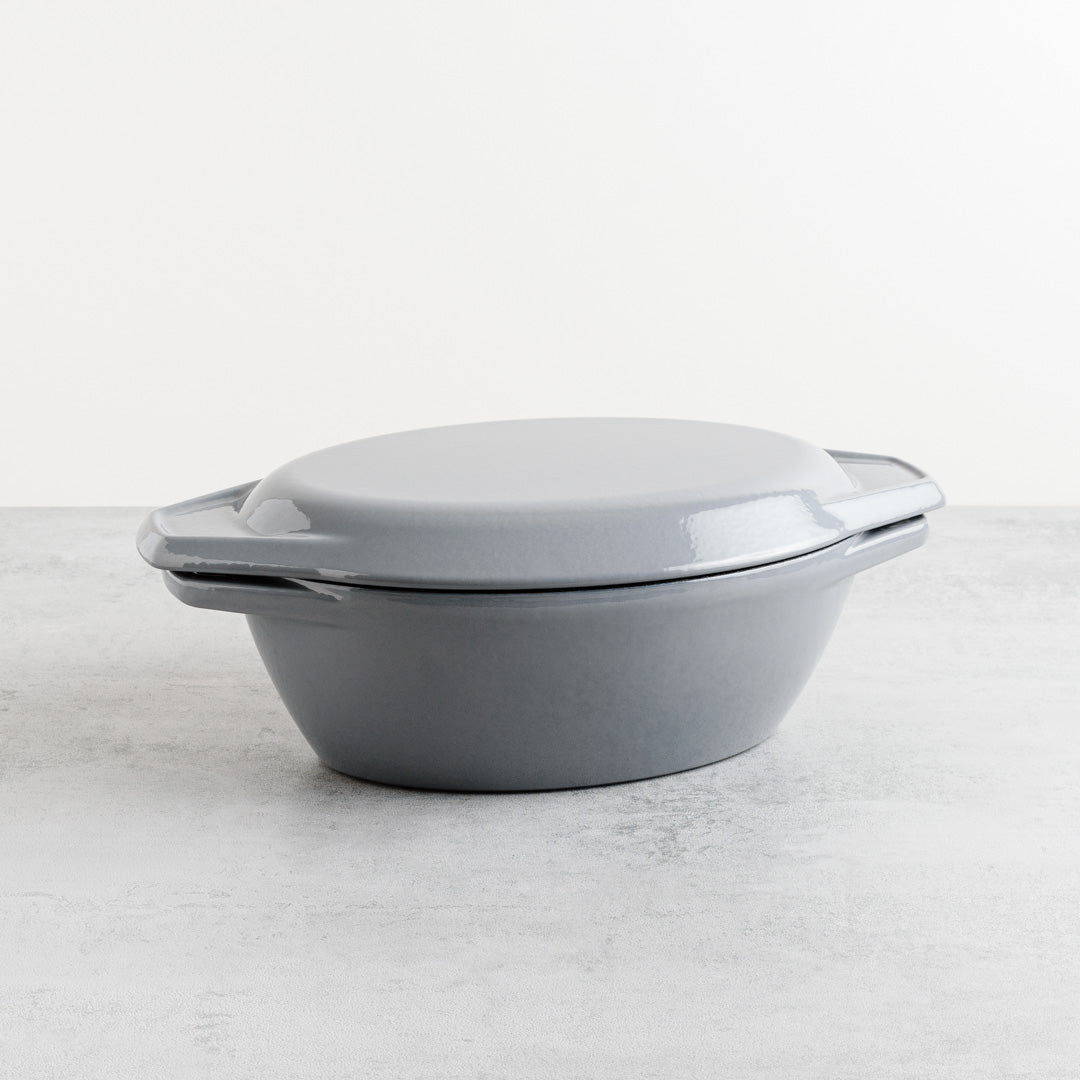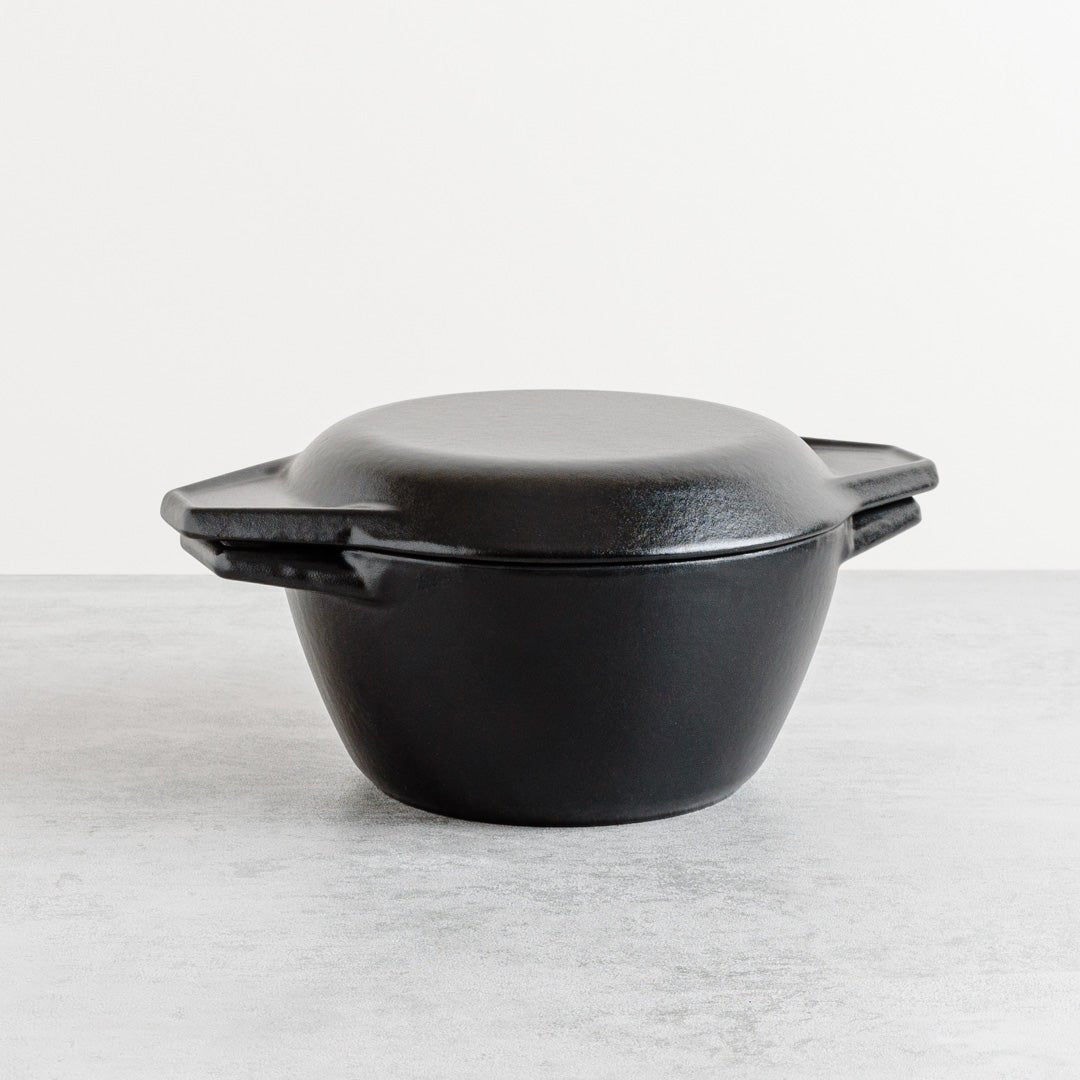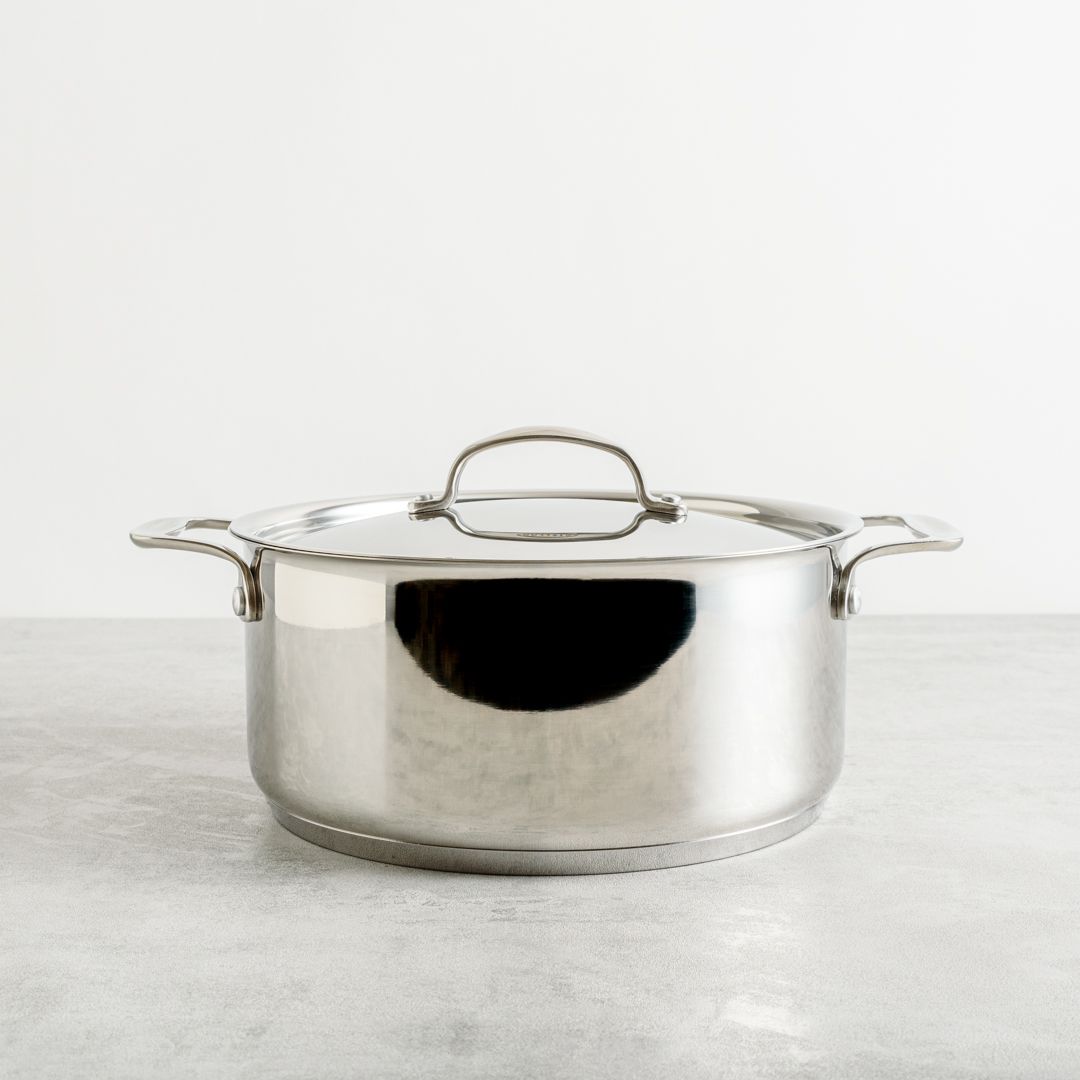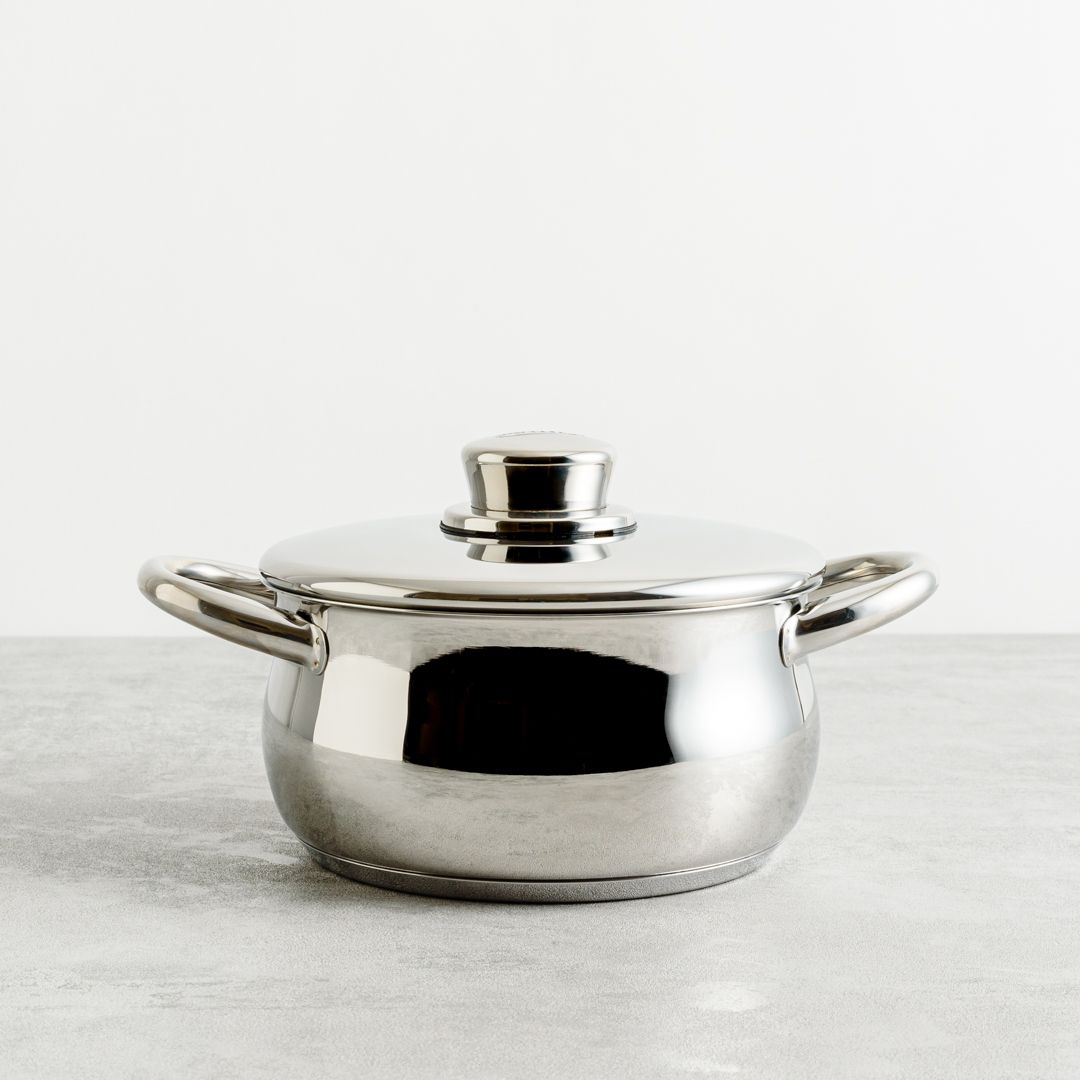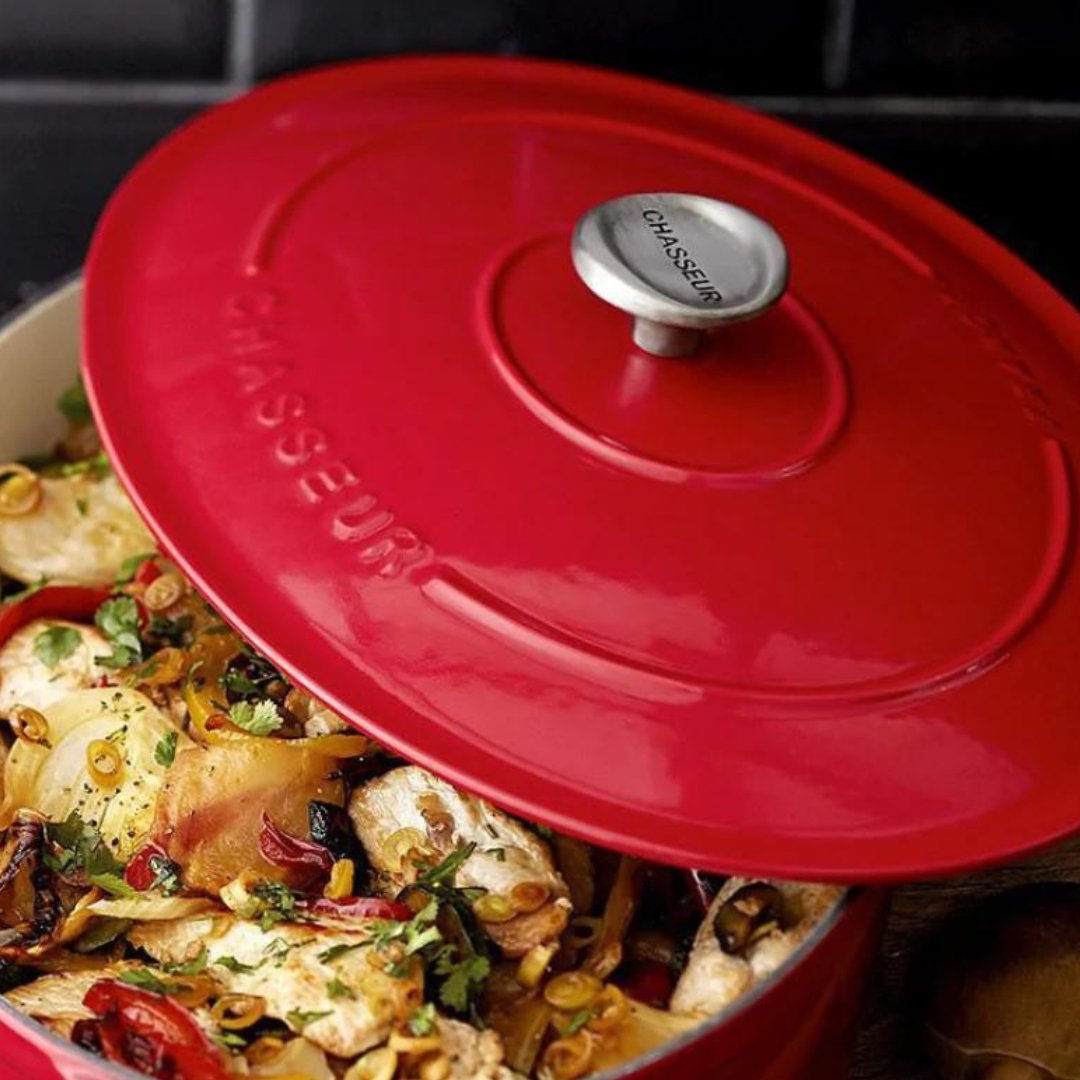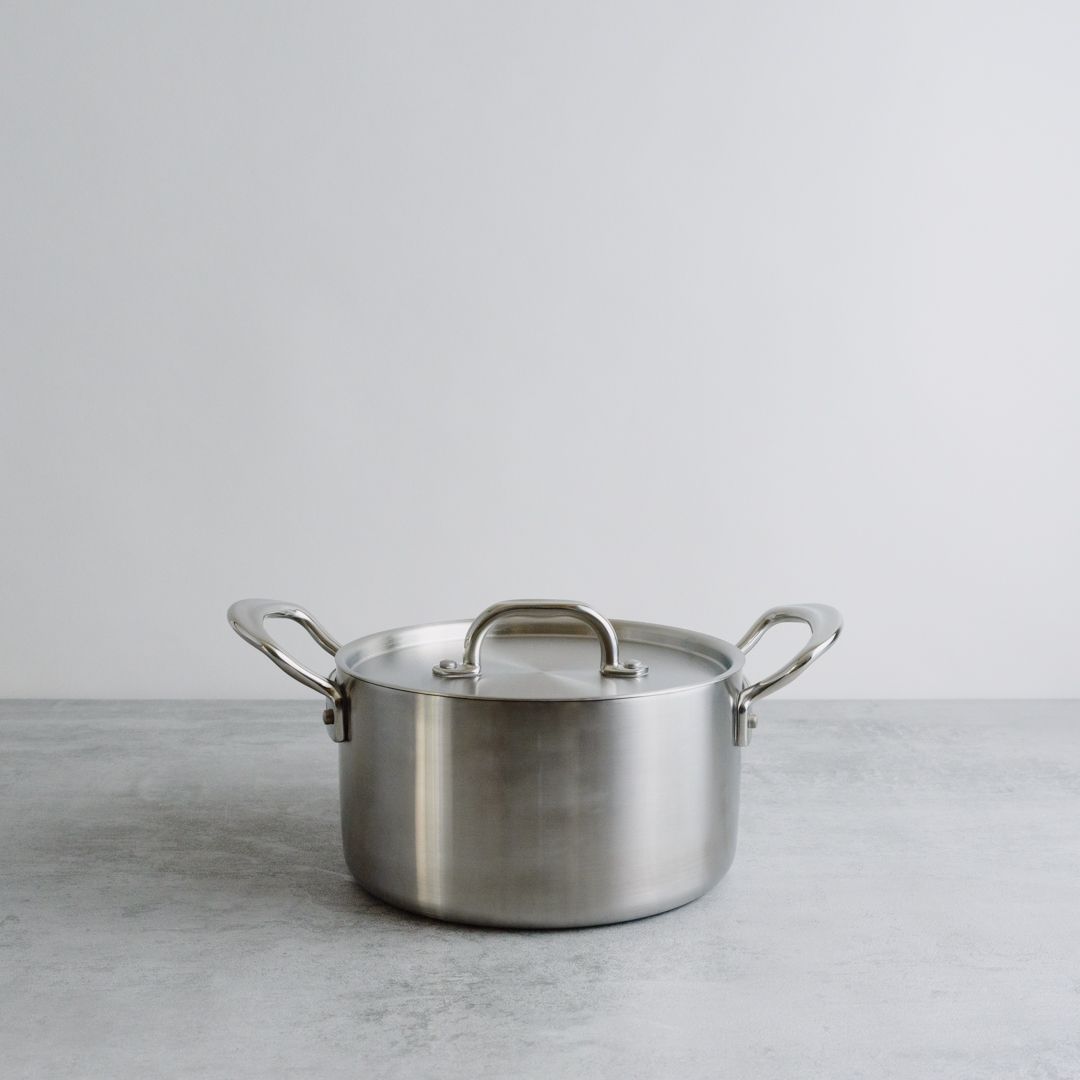Dutch Oven & Casserole Dish FAQs
What exactly is a Dutch oven, and how is it used in cooking?
A Dutch oven is a heavy, lidded cast iron pot that holds heat beautifully, making it brilliant for slow cooking, roasting, or baking. The best Dutch ovens work on both hob and oven, so you can brown meat on the stove, then bung it straight in the oven to finish. Enamelled versions are naturally non-stick and rust-resistant, while raw cast iron can be seasoned for the same effect. They’re famously hard-wearing too - many come with lifetime guarantees. If you’re curious how we pick the top ones, here’s how we research and select the most durable cookware.
Can you bake sourdough bread in a Dutch oven?
Yes, baking sourdough bread in a Dutch oven is a cracking way to get that golden crust and springy crumb. The best Dutch ovens trap steam inside, much like professional bakery ovens, helping your loaf rise and brown just right. Cast iron models are top-tier here - they hold high heat and bake evenly. Plenty of home bakers rely on them for consistent, bakery-level results. Fancy giving it a go? We’ve got tips for beginners in our guide to cooking with a Dutch oven.
What size Dutch oven is best for making bread or stews?
The best Dutch oven size for bread is usually 4–5 litres - roomy enough for a standard sourdough loaf. It’s also spot on for making stews, soups, or casseroles for up to six people. If you like to cook big batches or entertain often, consider a 6–7 litre pot instead. Smaller 2–3 litre sizes work well for side dishes or meals for one or two. As the saying goes, it’s horses for courses.
What are the longest-lasting Dutch ovens made from?
The longest-lasting Dutch ovens are made from cast iron, whether raw or enamelled. This classic material is incredibly tough, holds heat brilliantly, and with a bit of care, will see you through a lifetime of meals. Enamelled cast iron doesn’t need seasoning and shrugs off rust, while raw cast iron can be re-seasoned and restored endlessly. Some brands even offer a lifetime guarantee or re-enamelling service - a nice bit of peace of mind.
How do you clean and care for a cast iron Dutch oven?
To care for a cast iron Dutch oven, wash with warm water and a soft brush - no harsh soaps or soaking needed. Raw cast iron must be dried thoroughly and lightly oiled to prevent rust. Enamelled cast iron is easier going and can go in the dishwasher, though hand washing helps it last longer. Always store it with the lid off to let air circulate. For extra help, our product care and repair hub has loads of tips.
What can I cook in a Dutch oven besides casseroles?
There’s plenty more you can cook in a Dutch oven besides casseroles. From slow-roasted meats and rich risottos to deep-fried treats and fresh-baked sourdough, it's a bit of a kitchen workhorse. You can also make hearty soups, stews, and even sweet bakes like cobblers or sticky toffee pud. Its thick walls and even heat make it solid for so many recipes. See more great tools in our durable cookware collection.
Why is it called a Dutch oven?
It’s called a Dutch oven thanks to an 18th-century Englishman who nicked a Dutch method for casting iron cookware. He took their clever sand-casting technique back to Britain, where the sturdy new pots became popular - and the name stuck. Today’s best Dutch ovens still stick to that tried-and-true design: thick, heavy, and made to last decades, if not generations.

